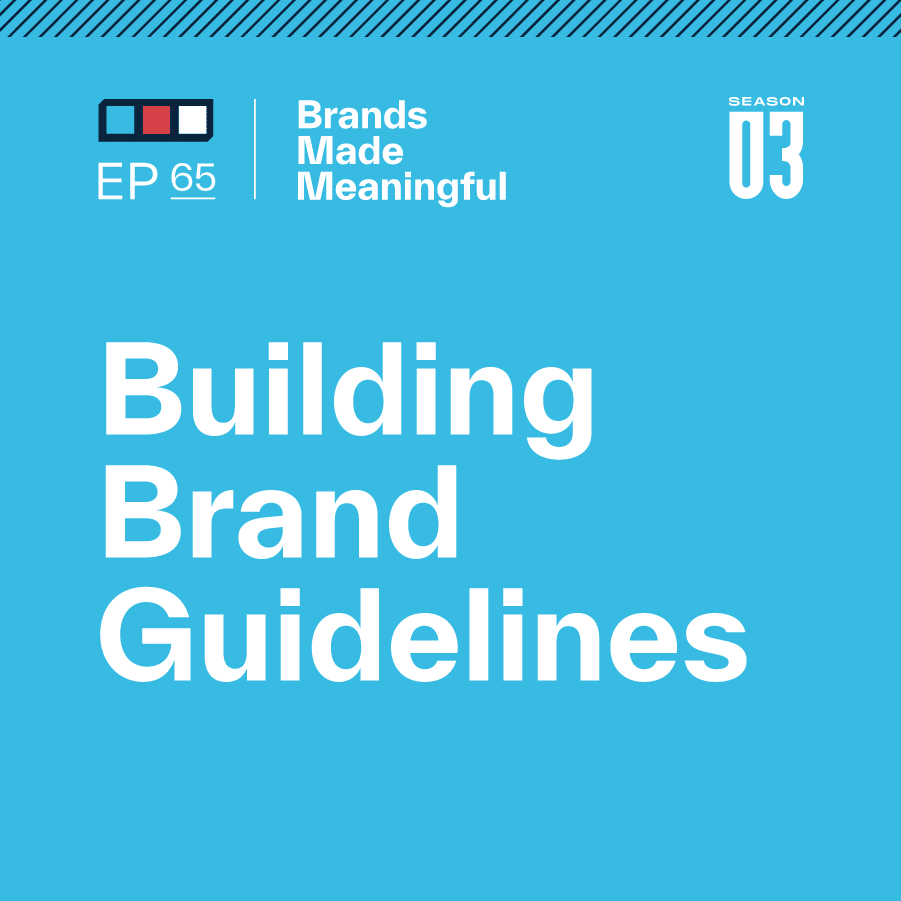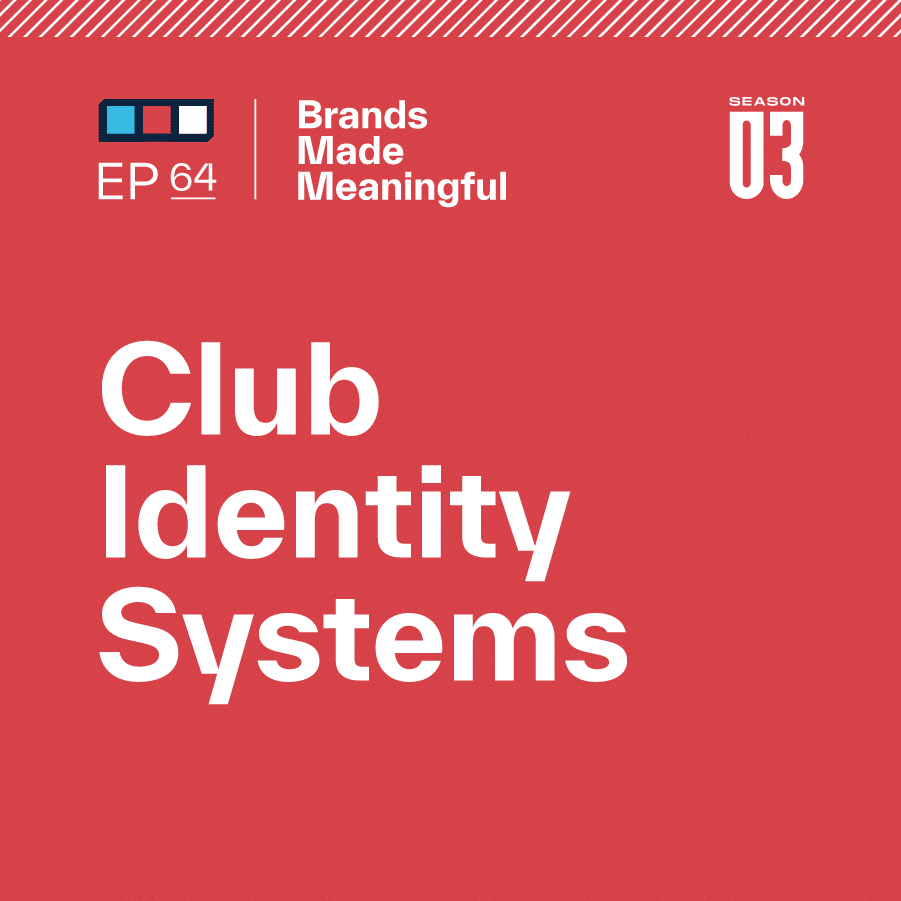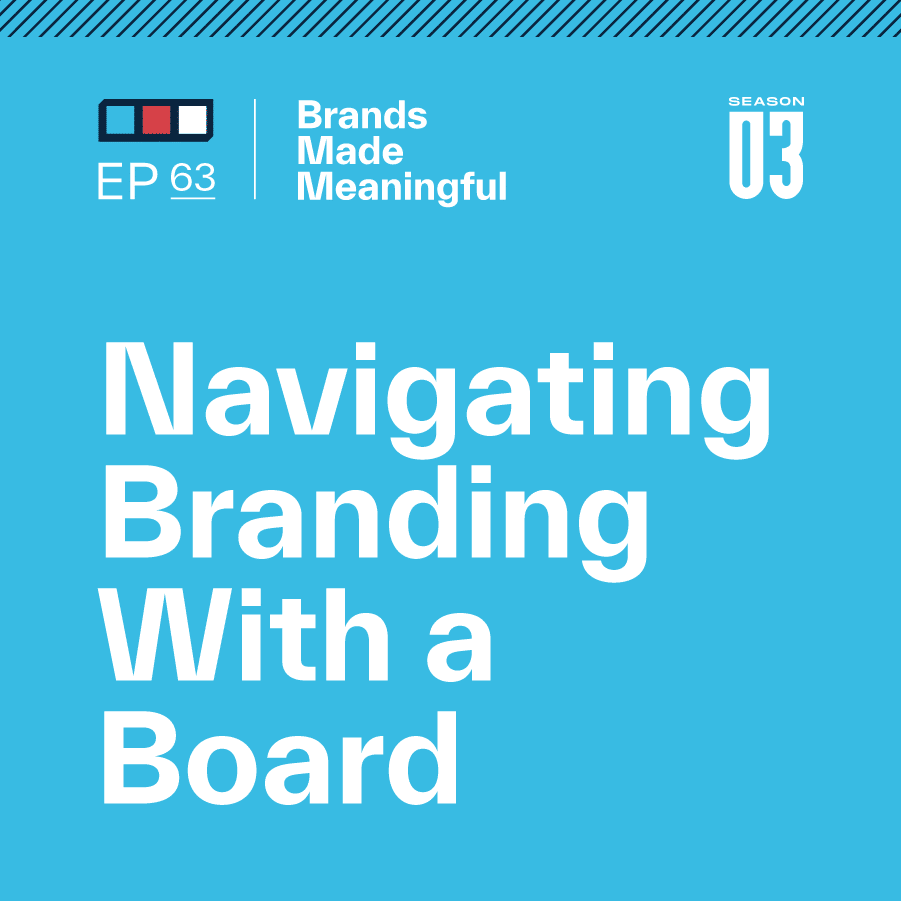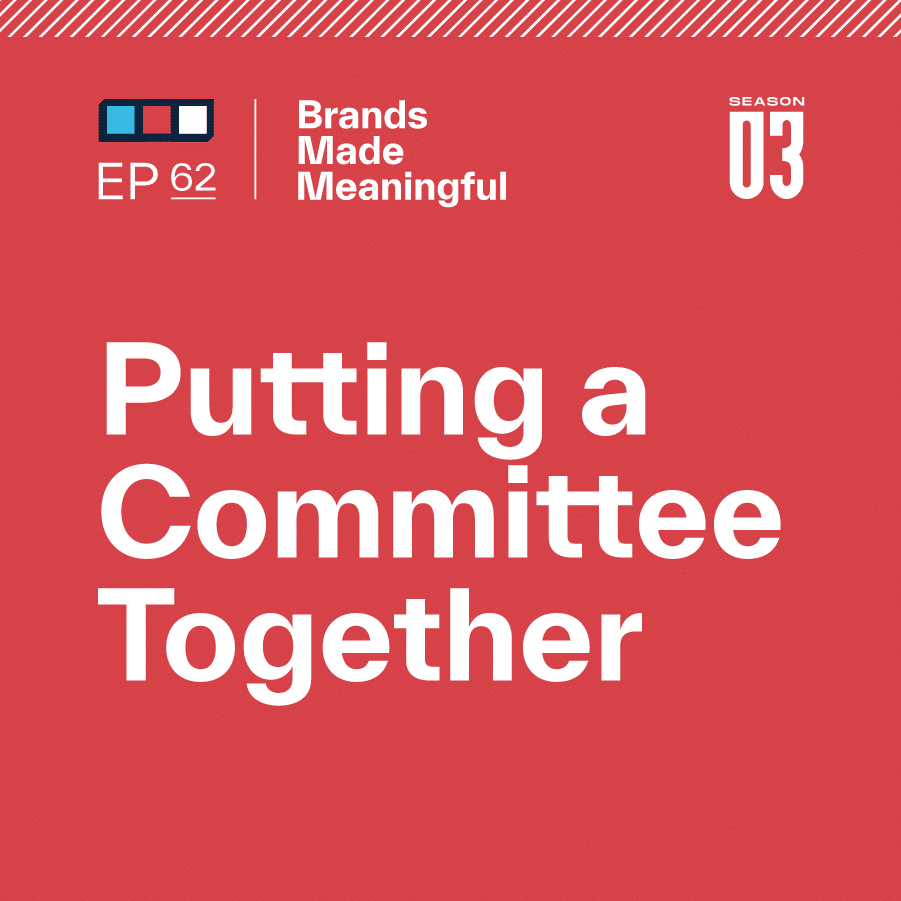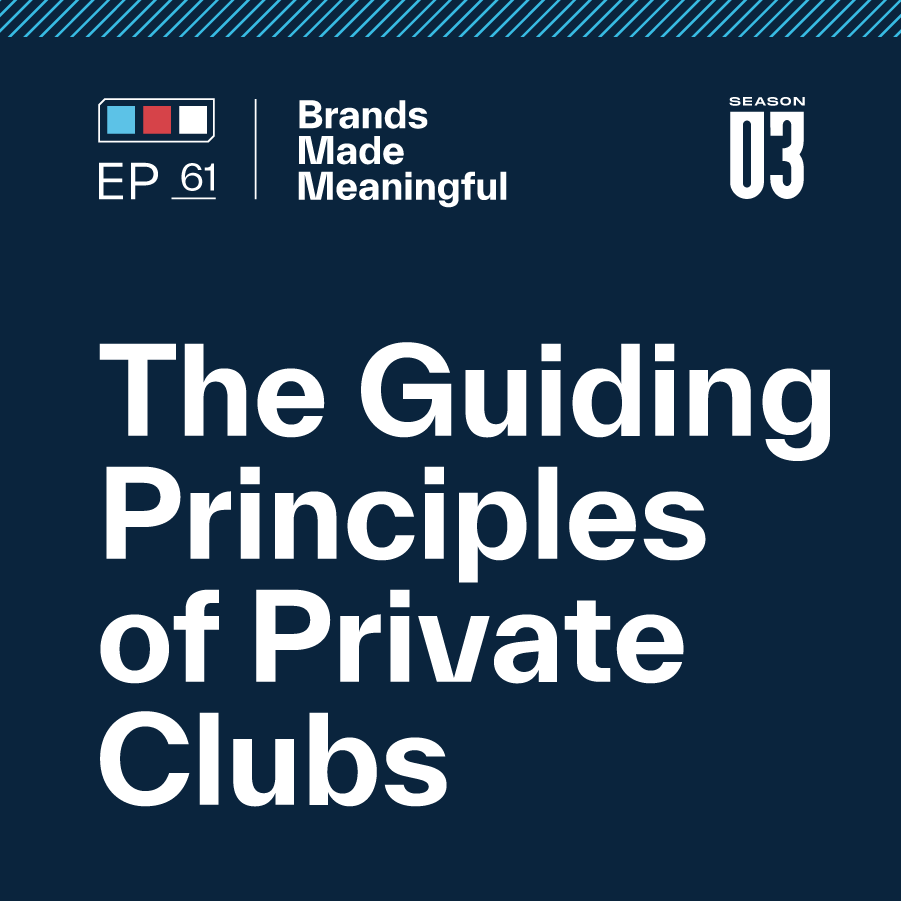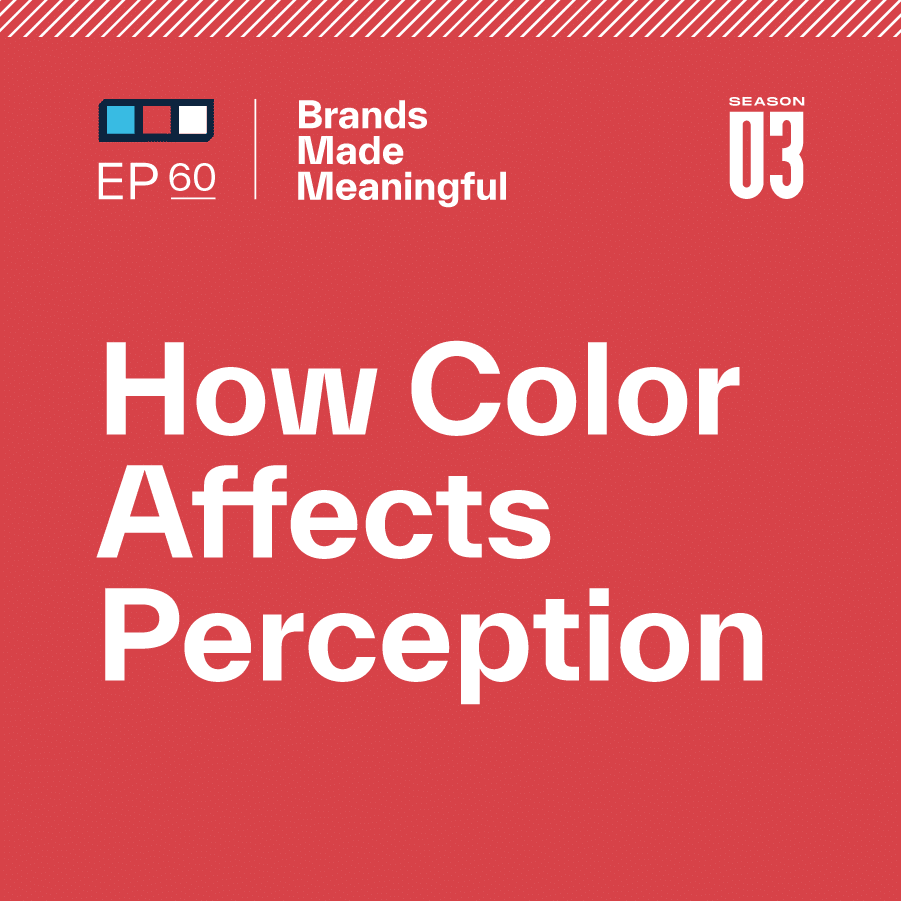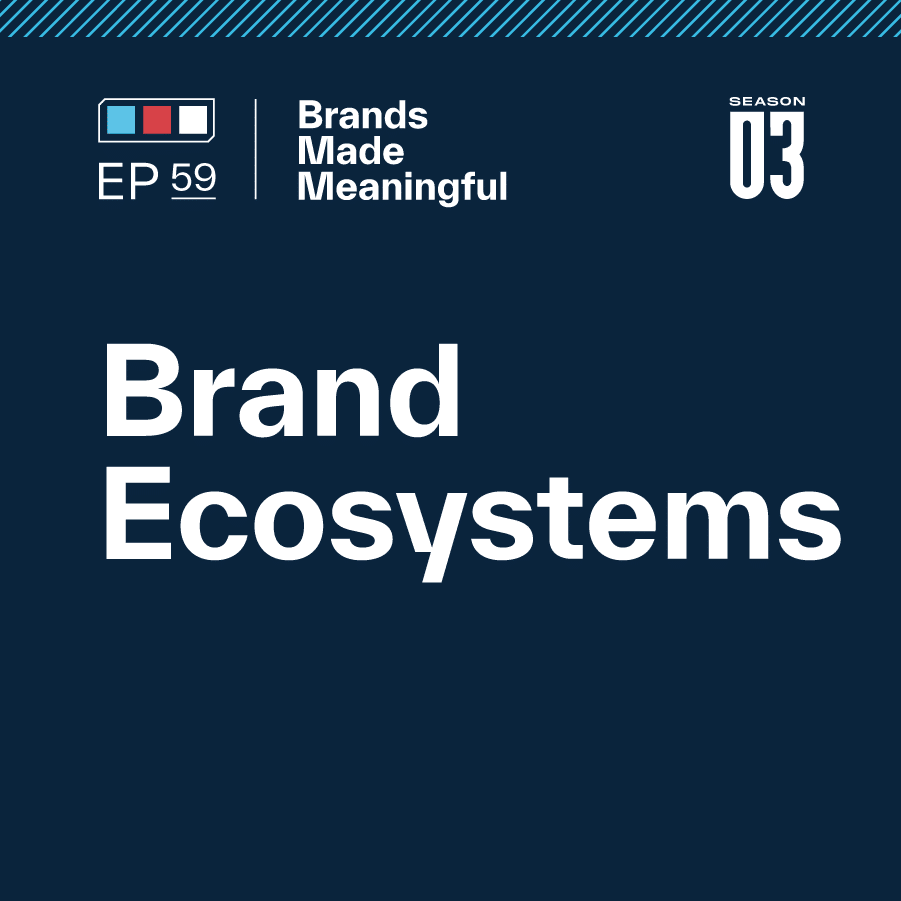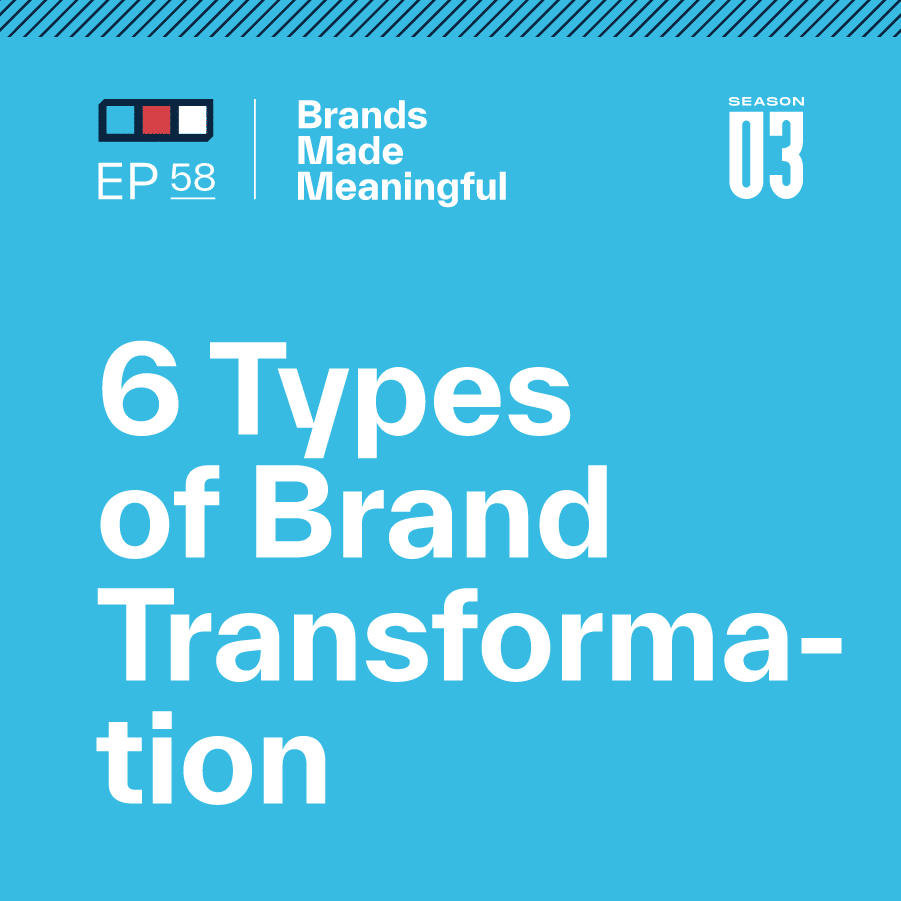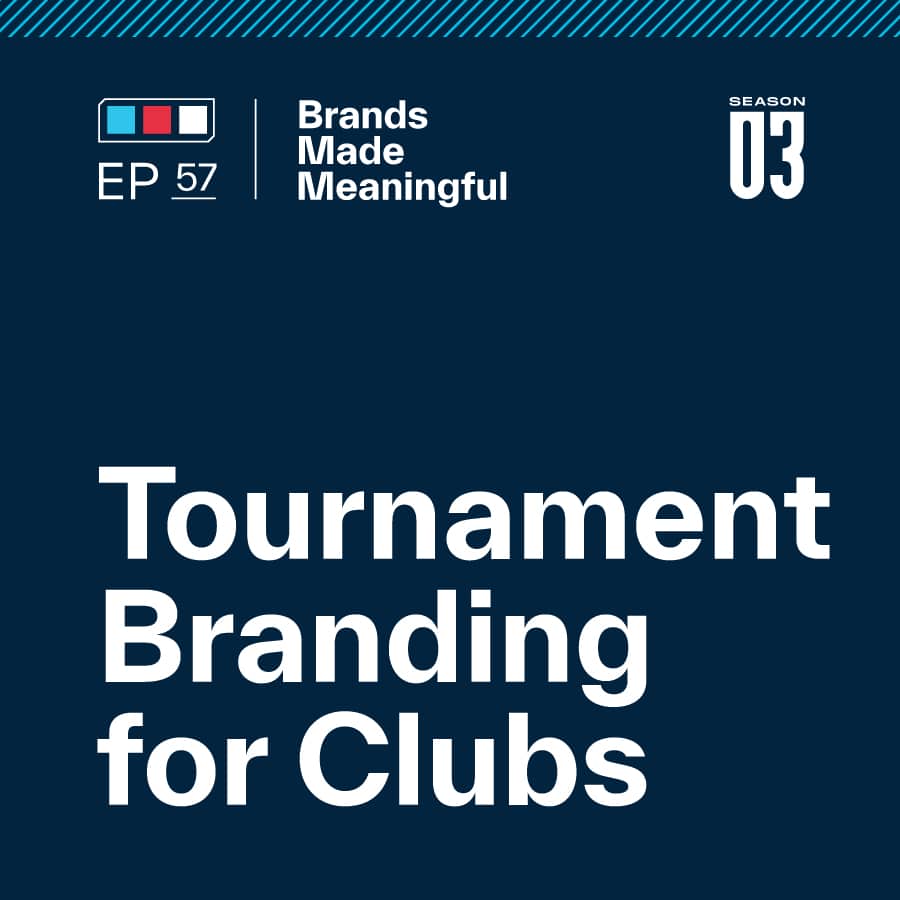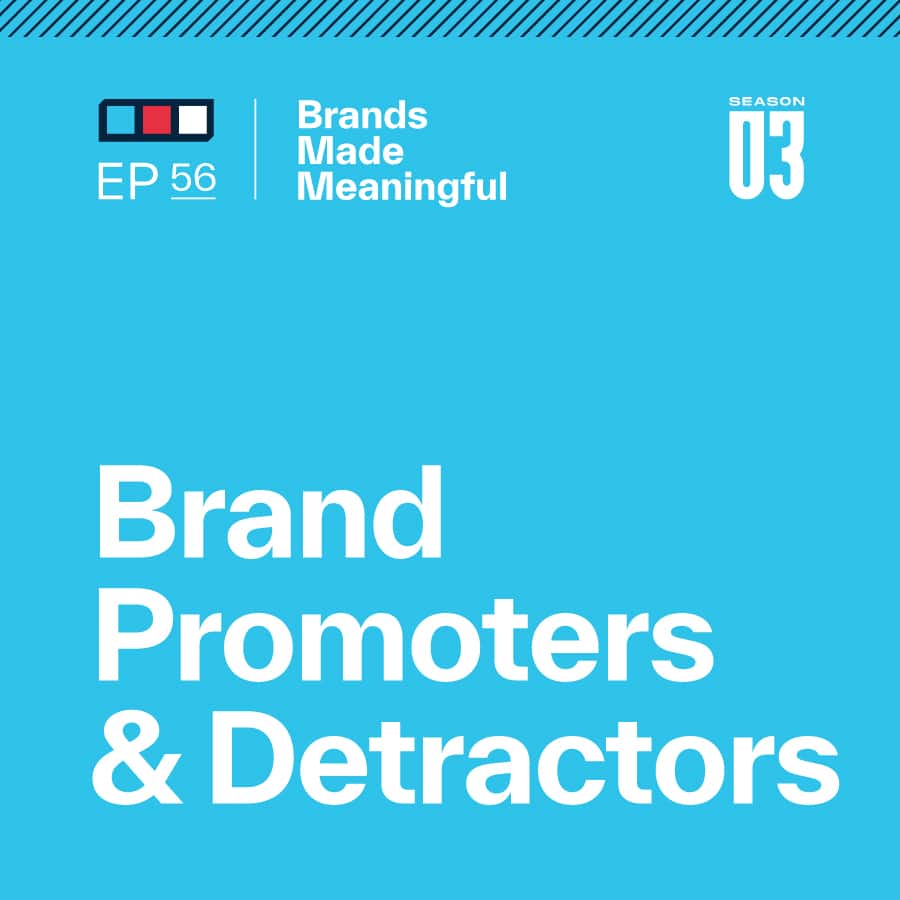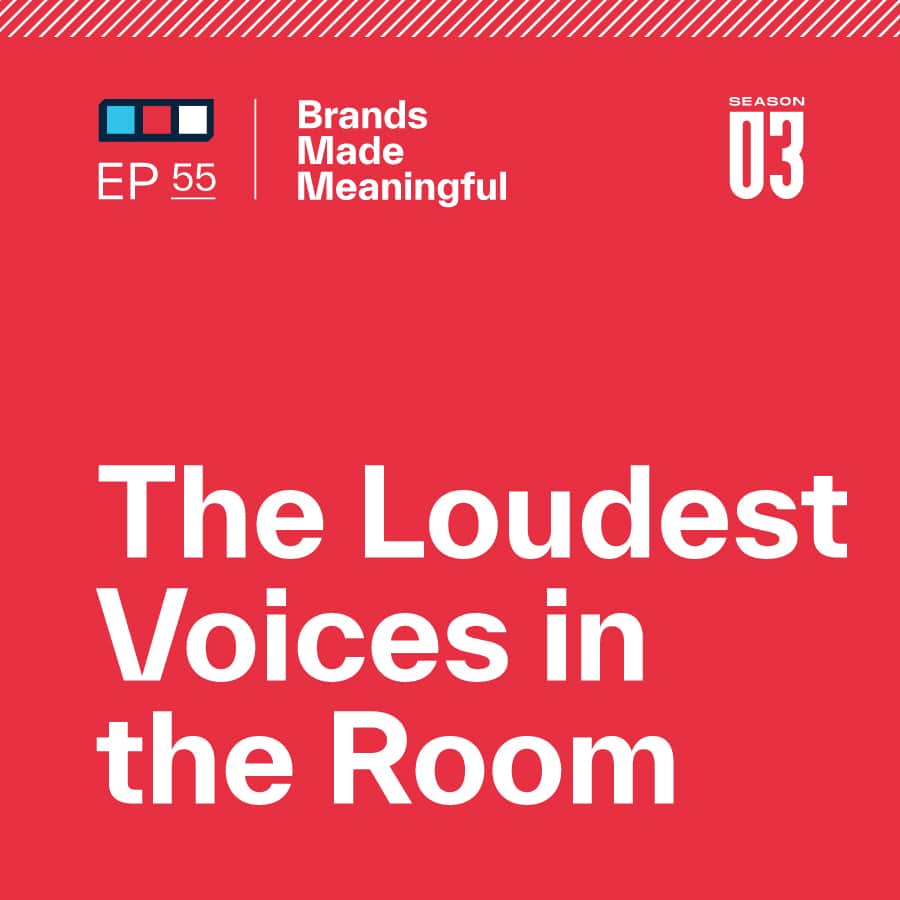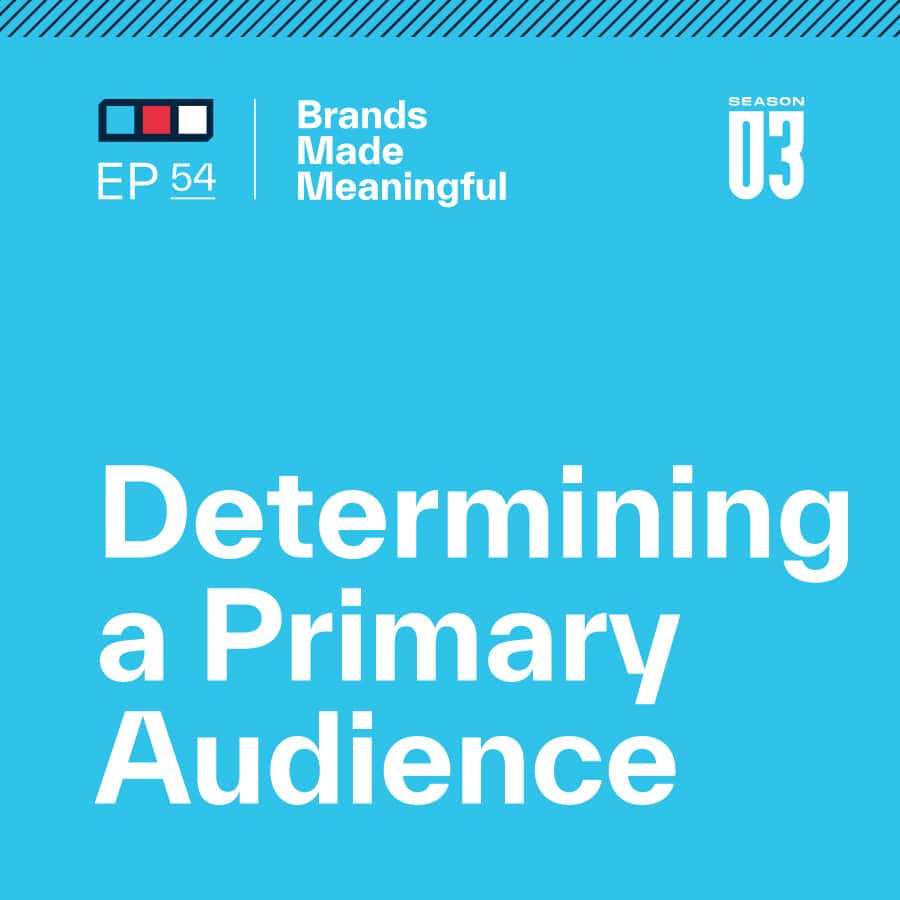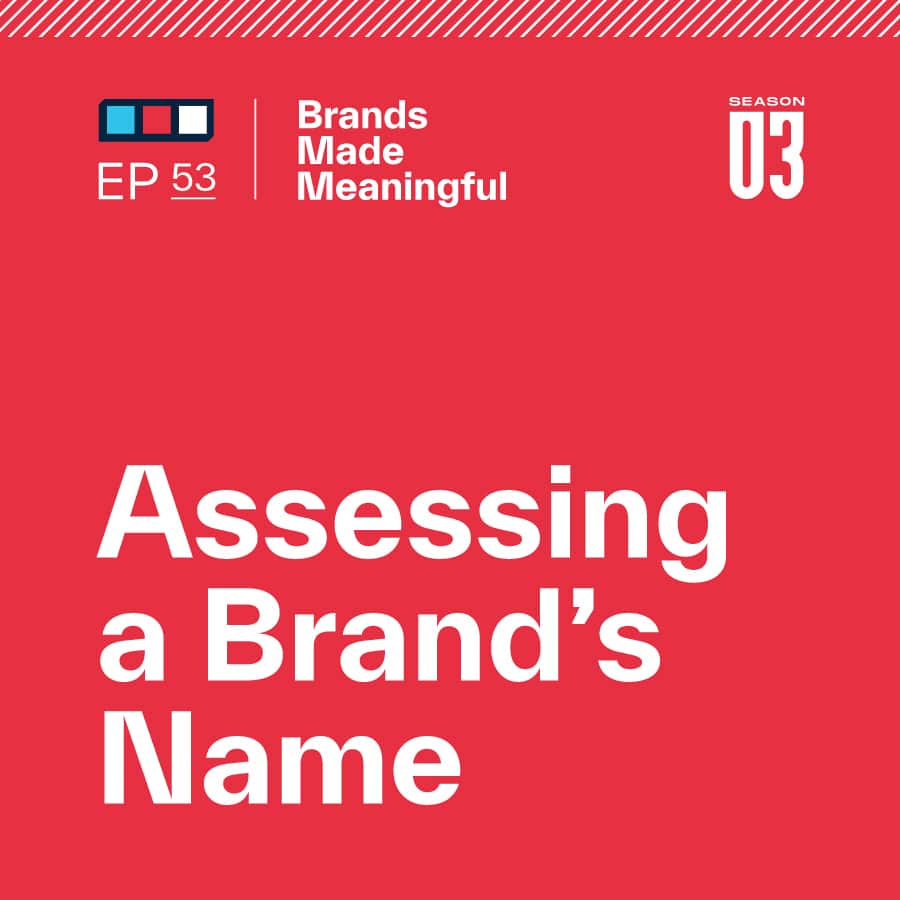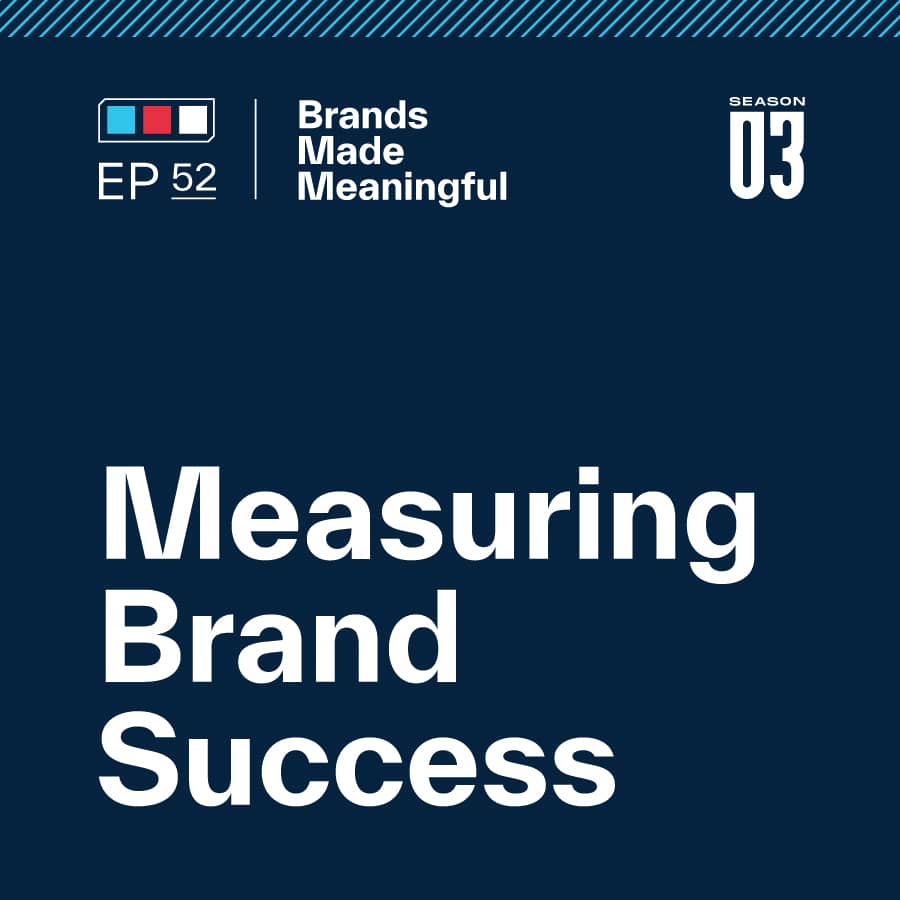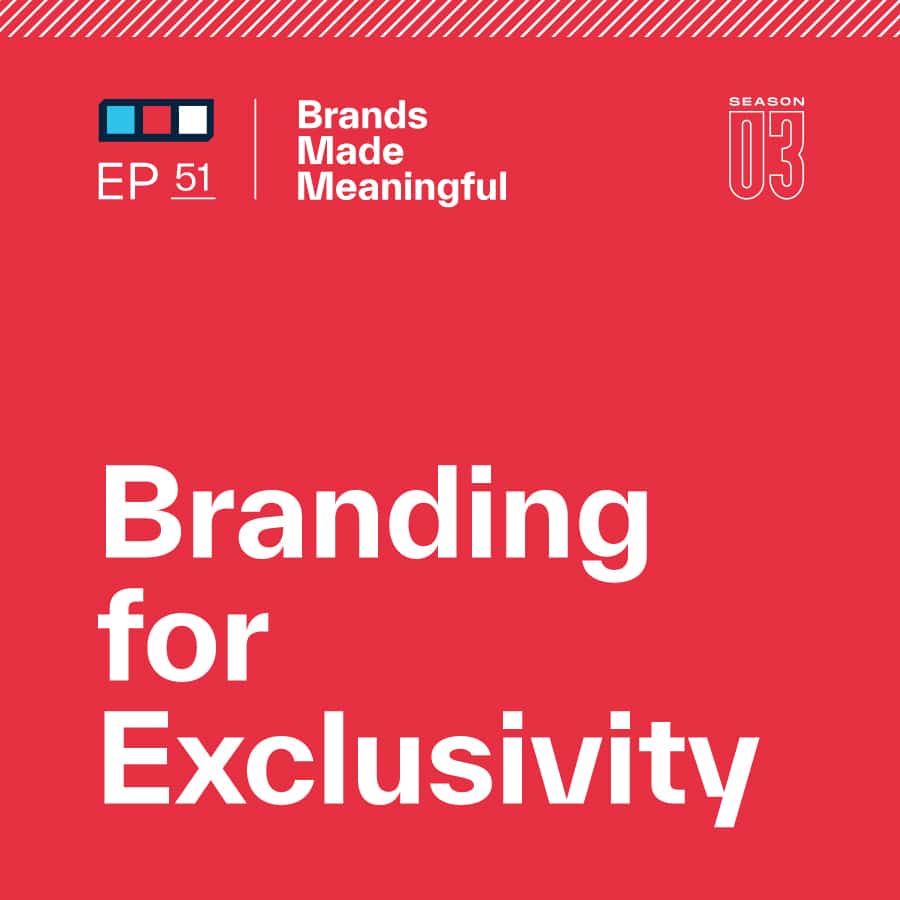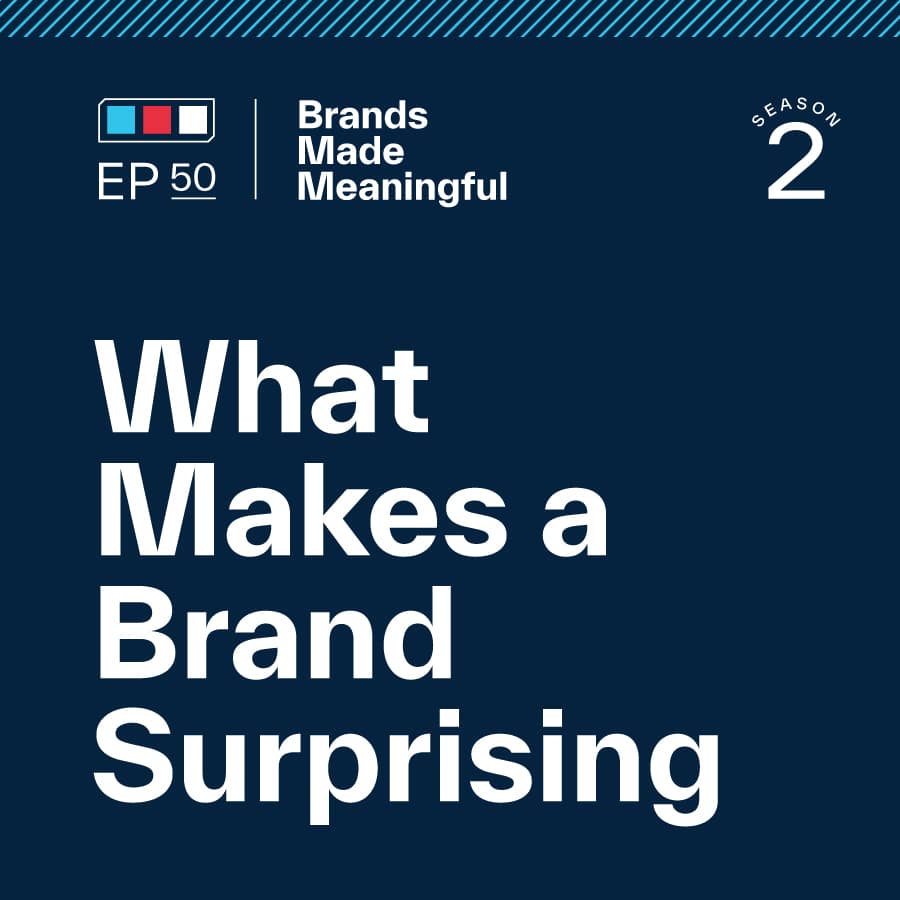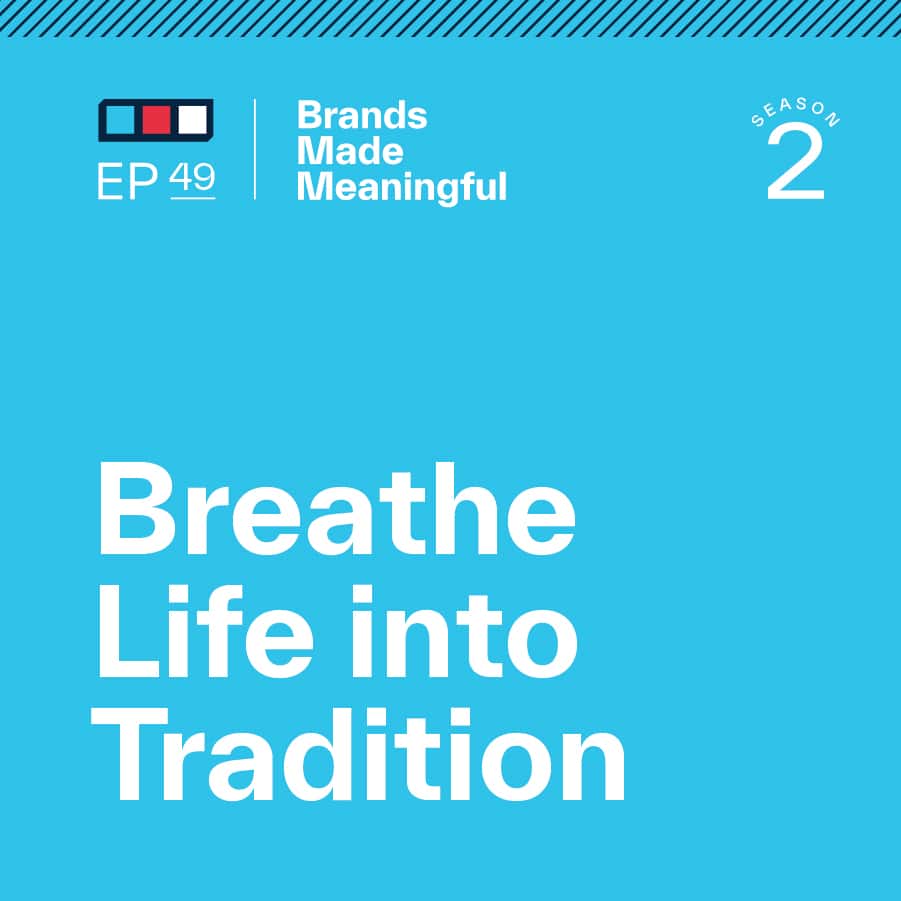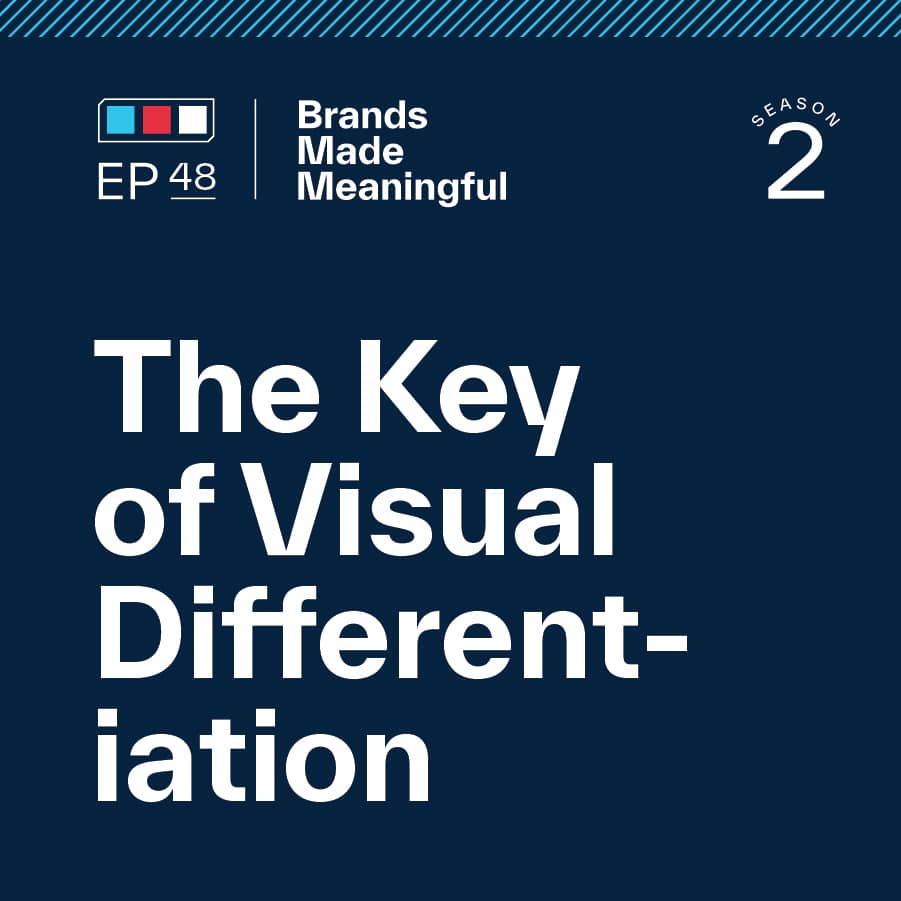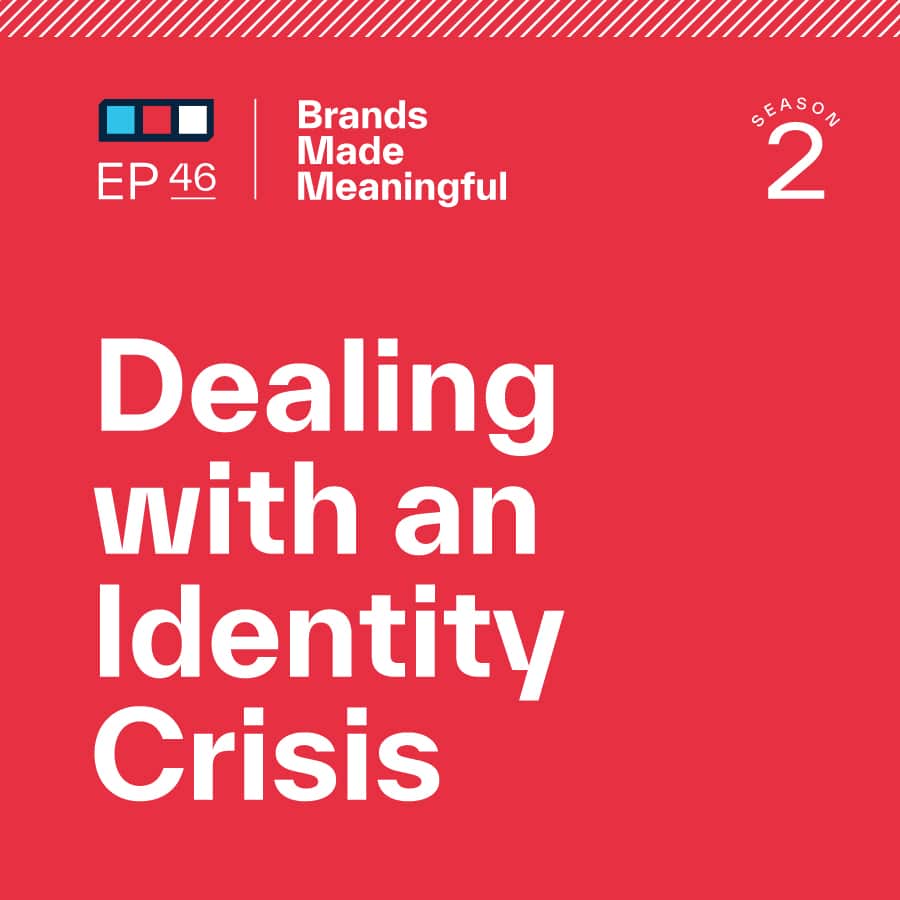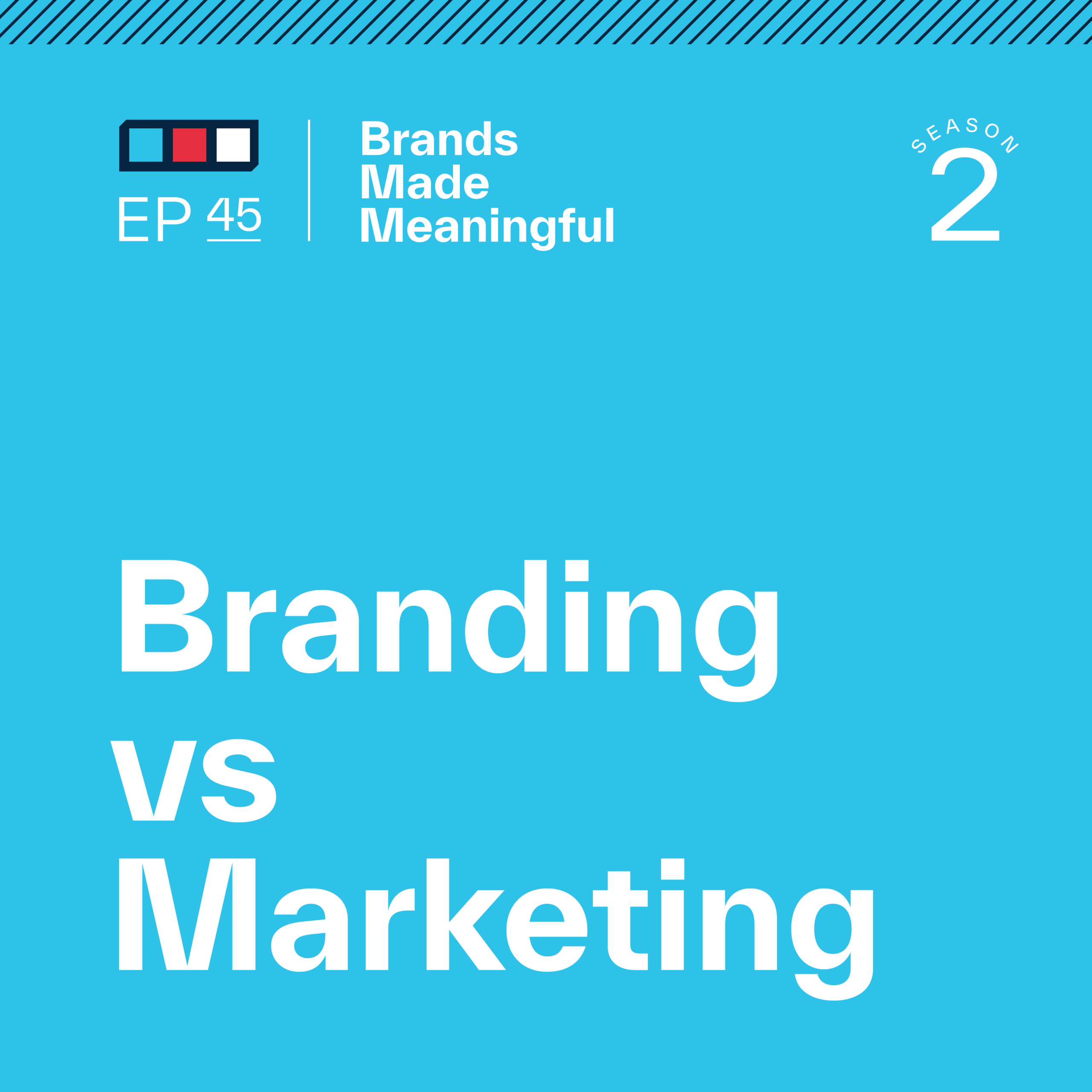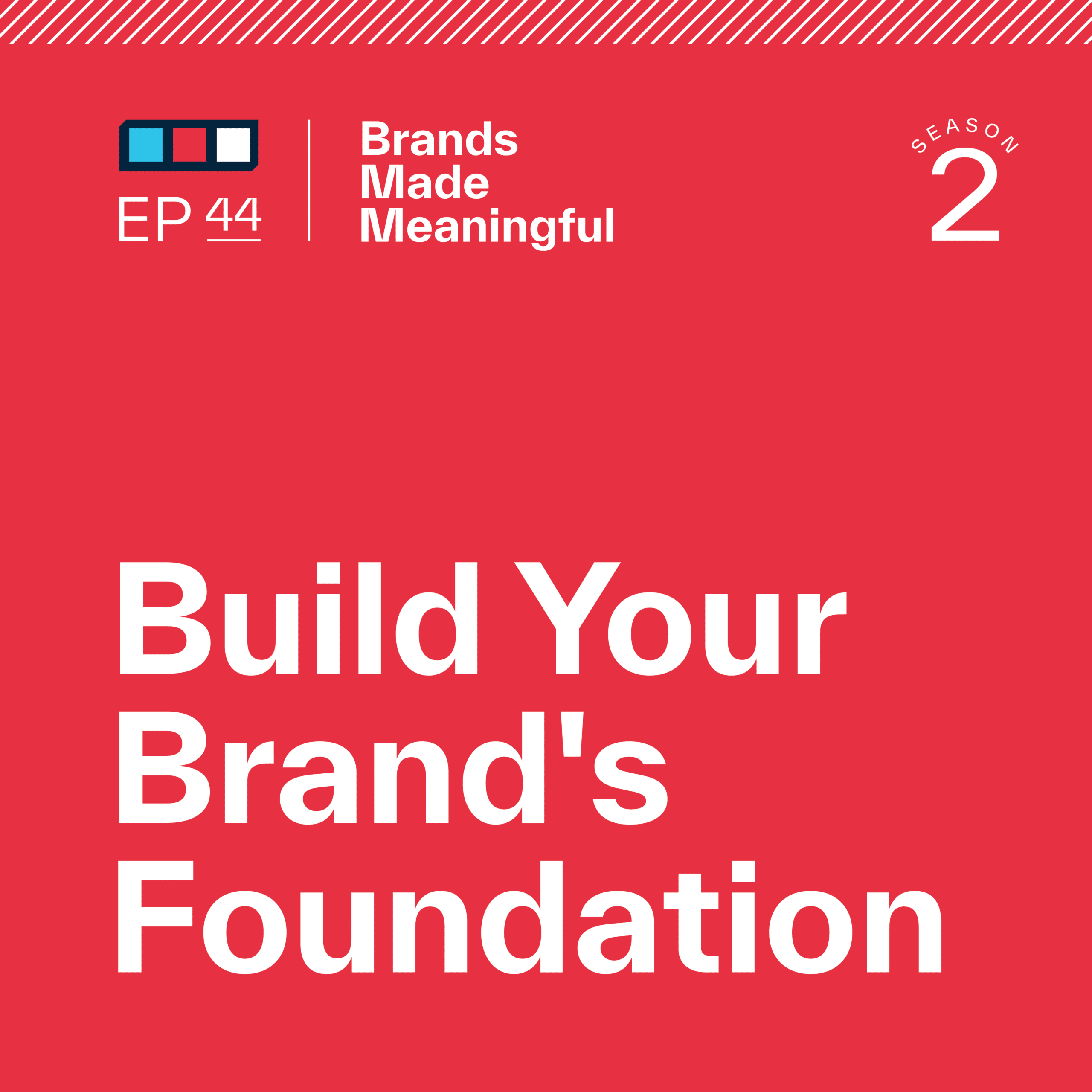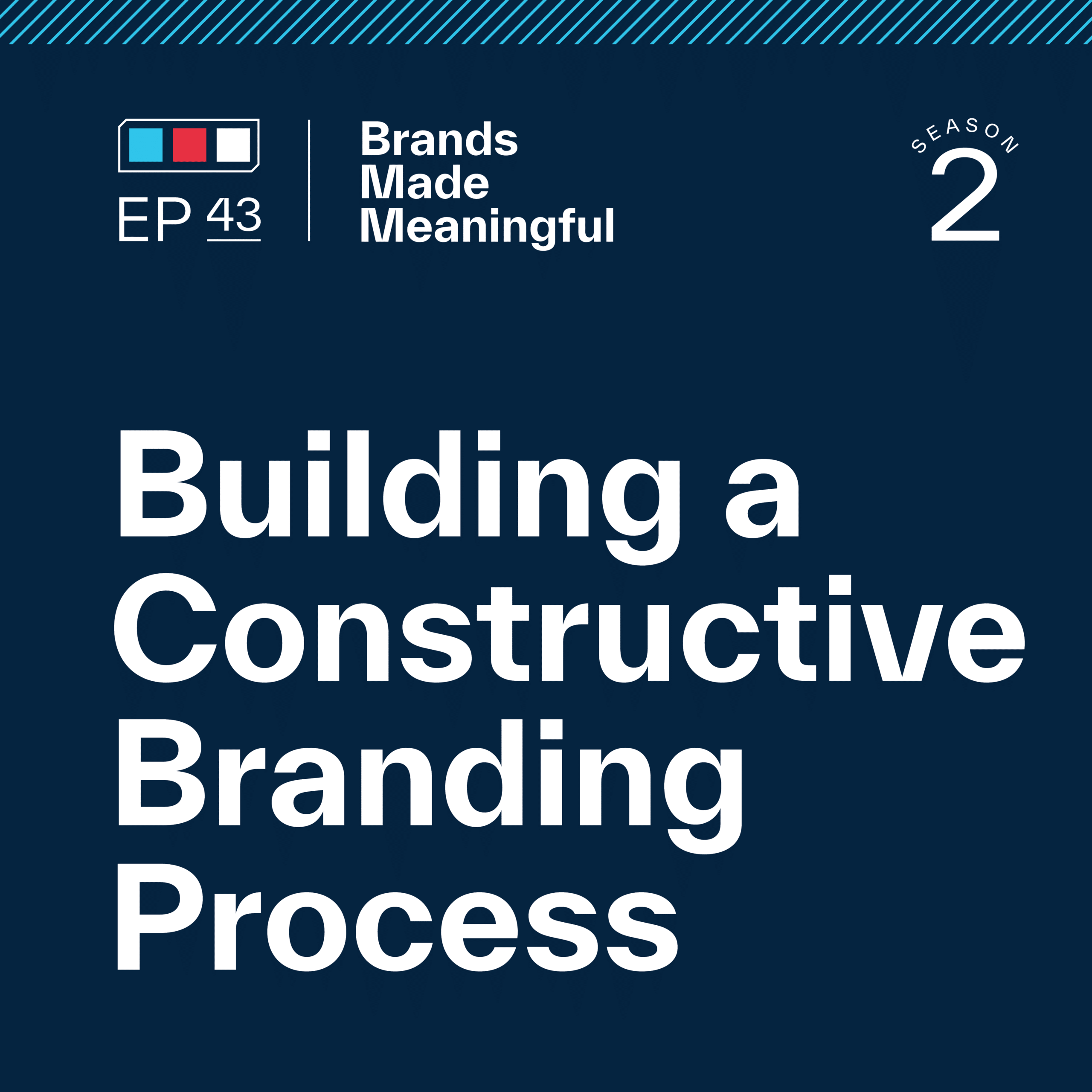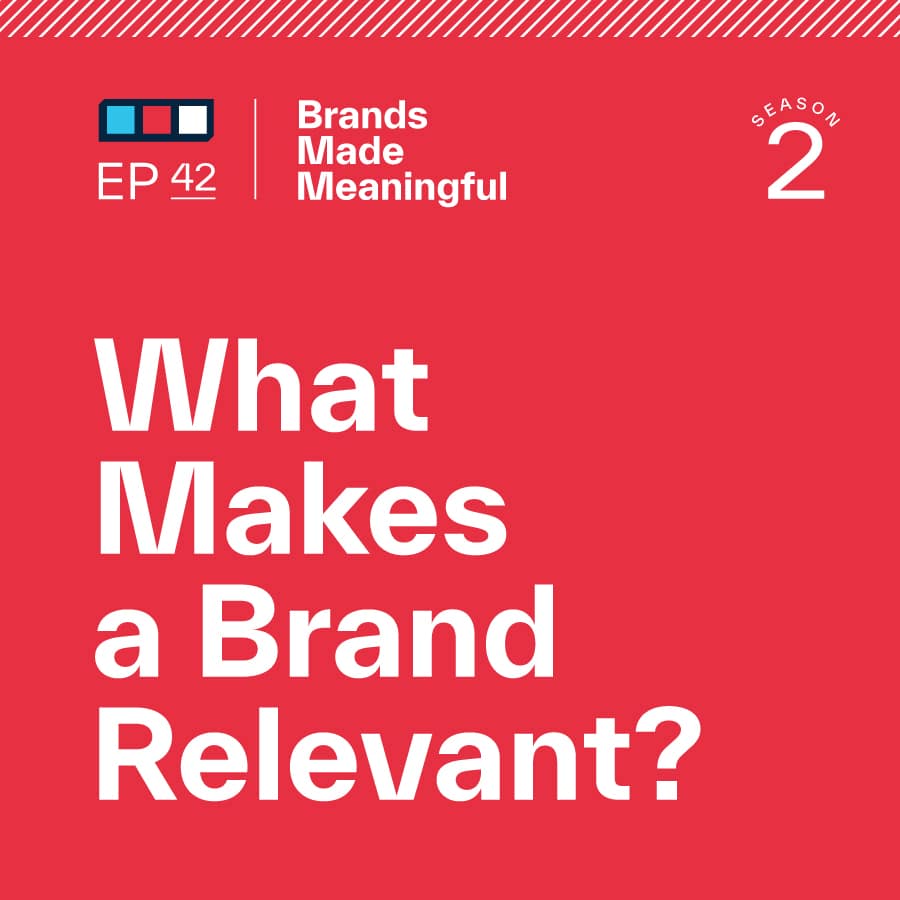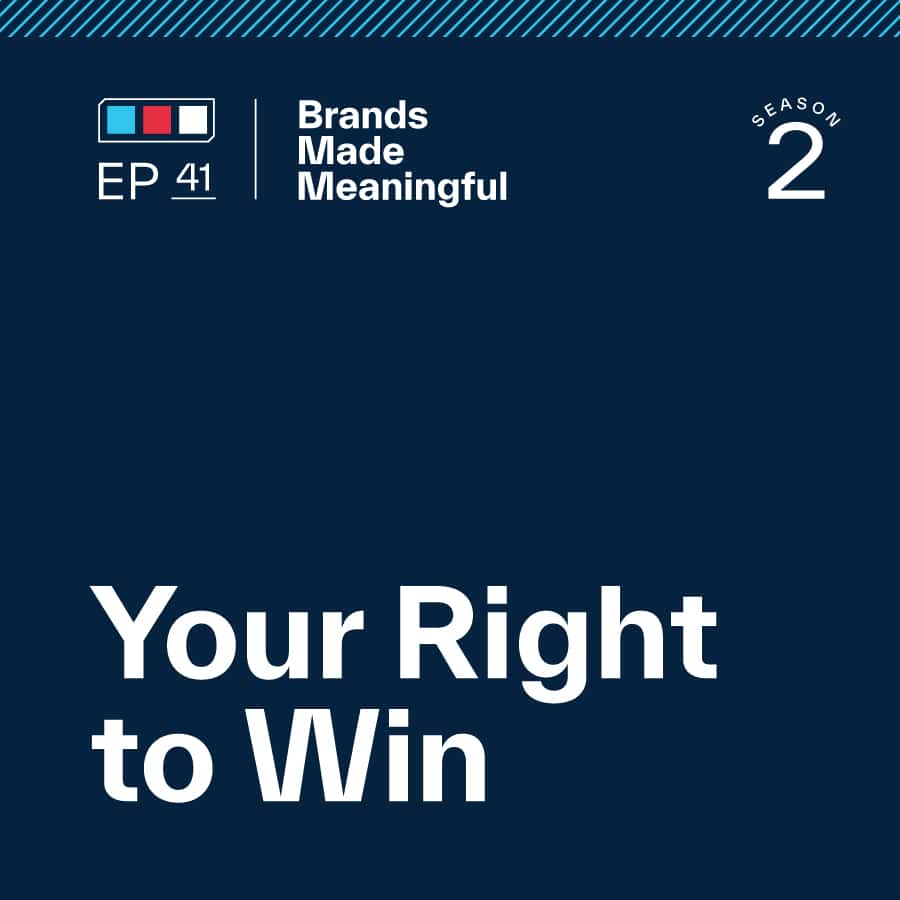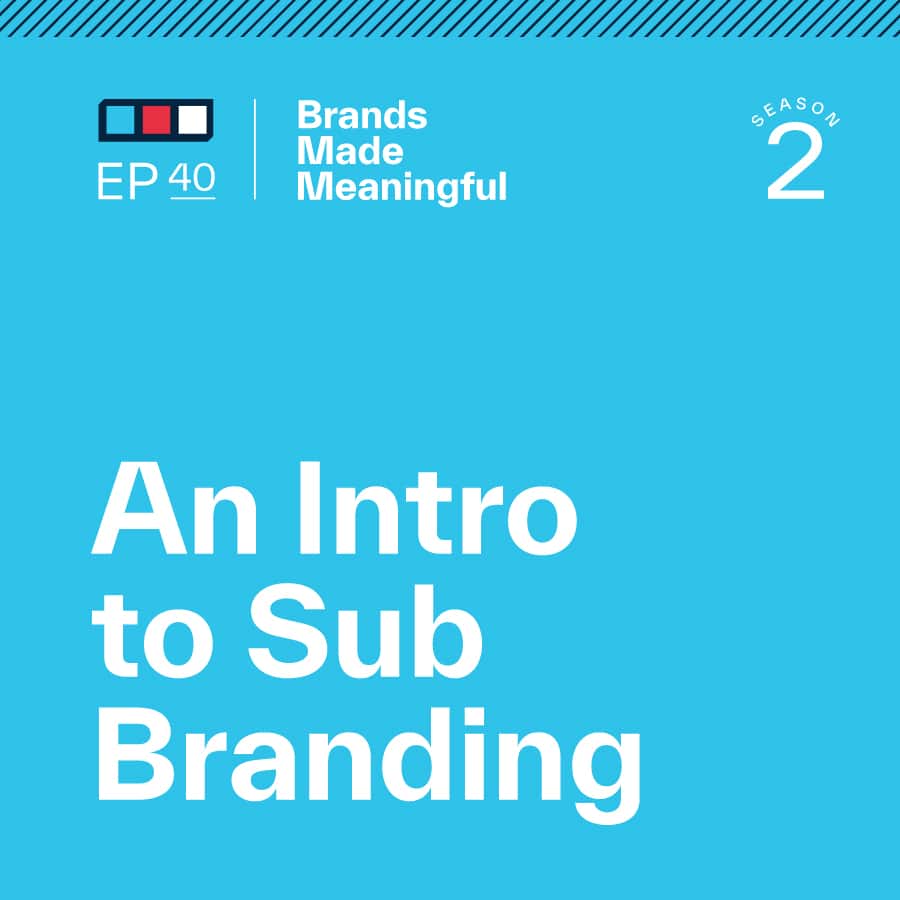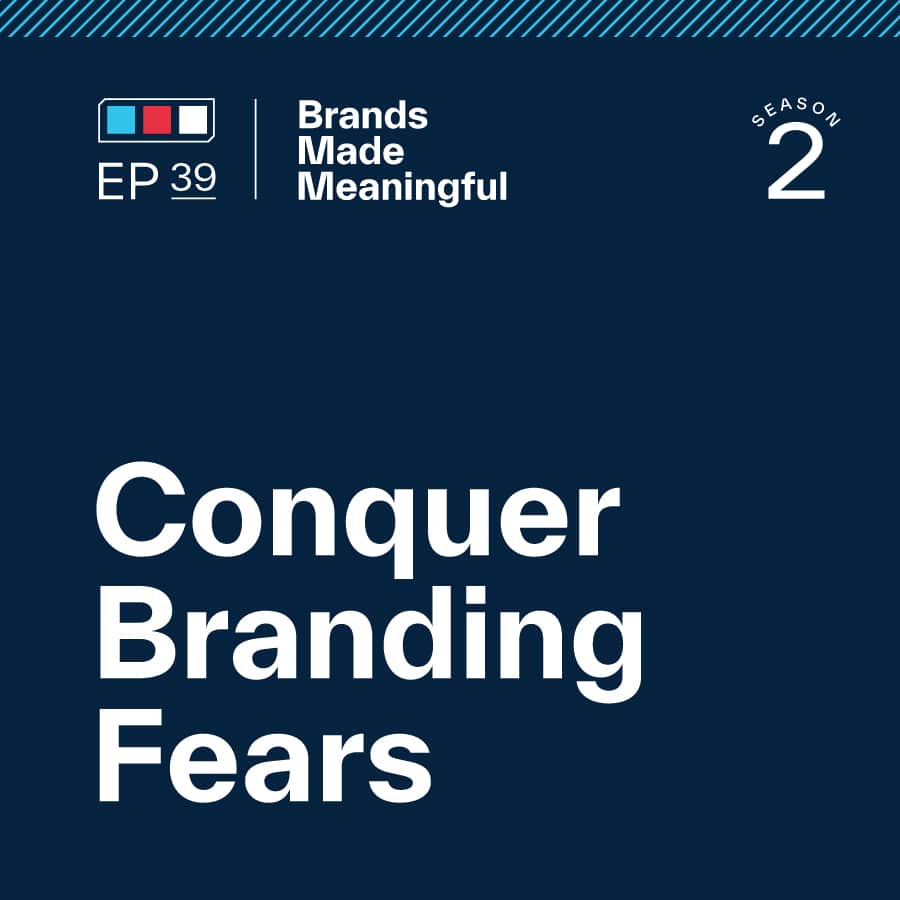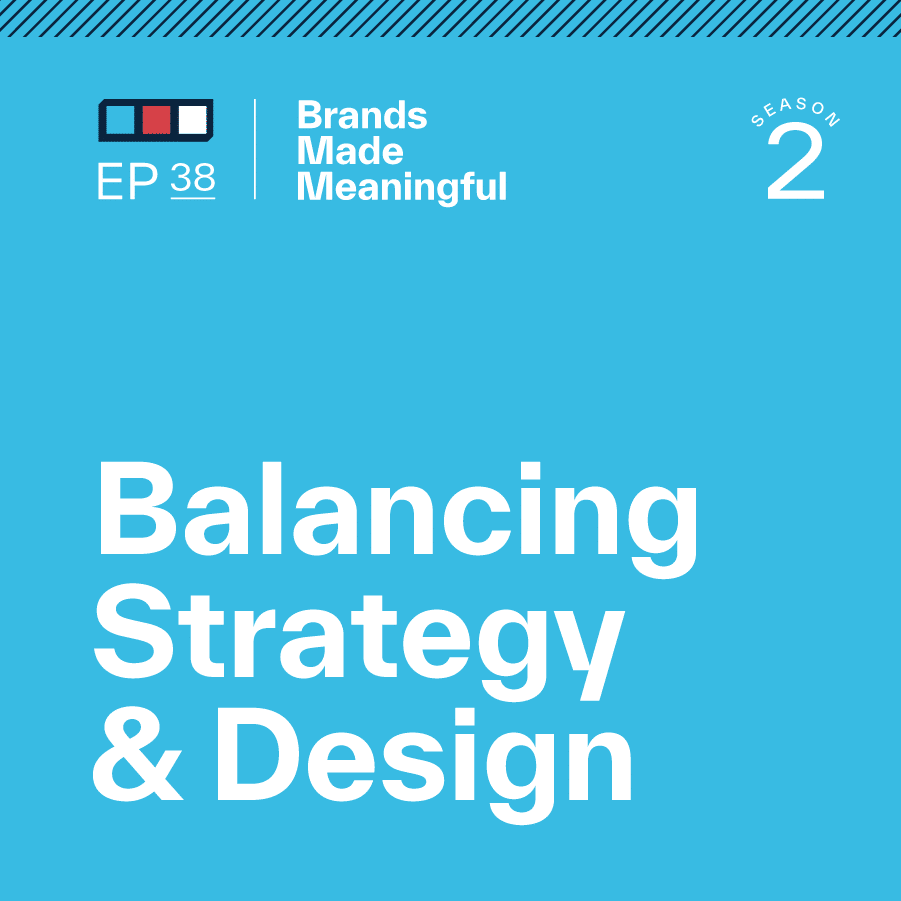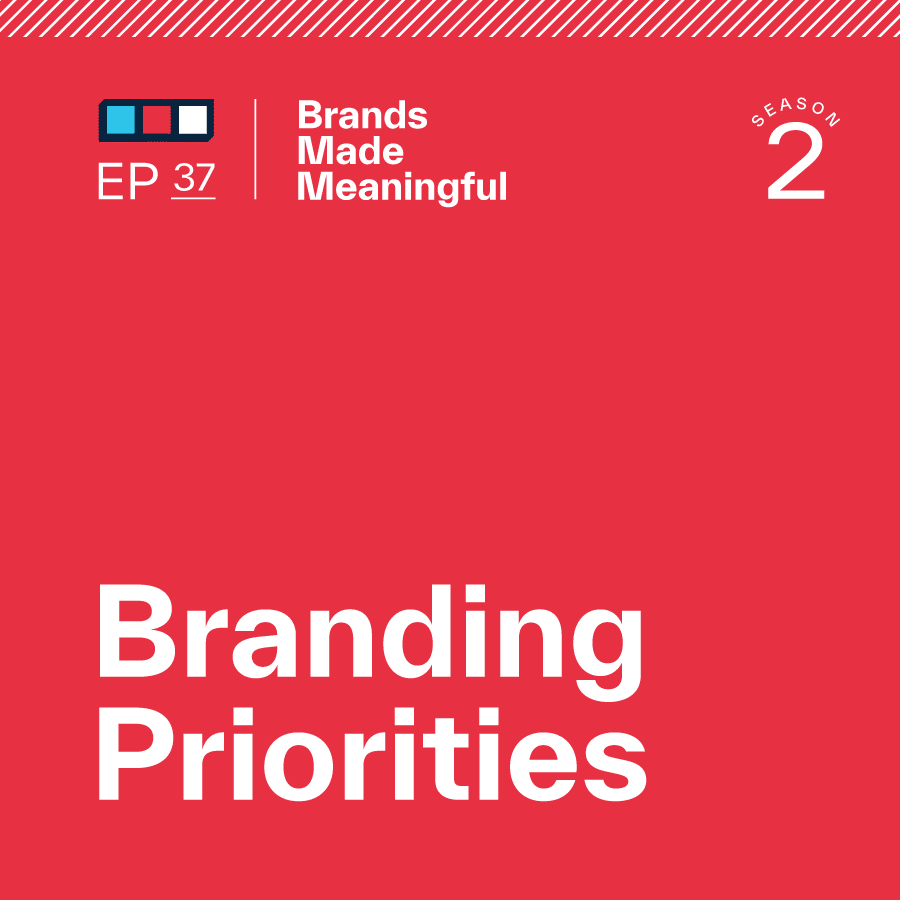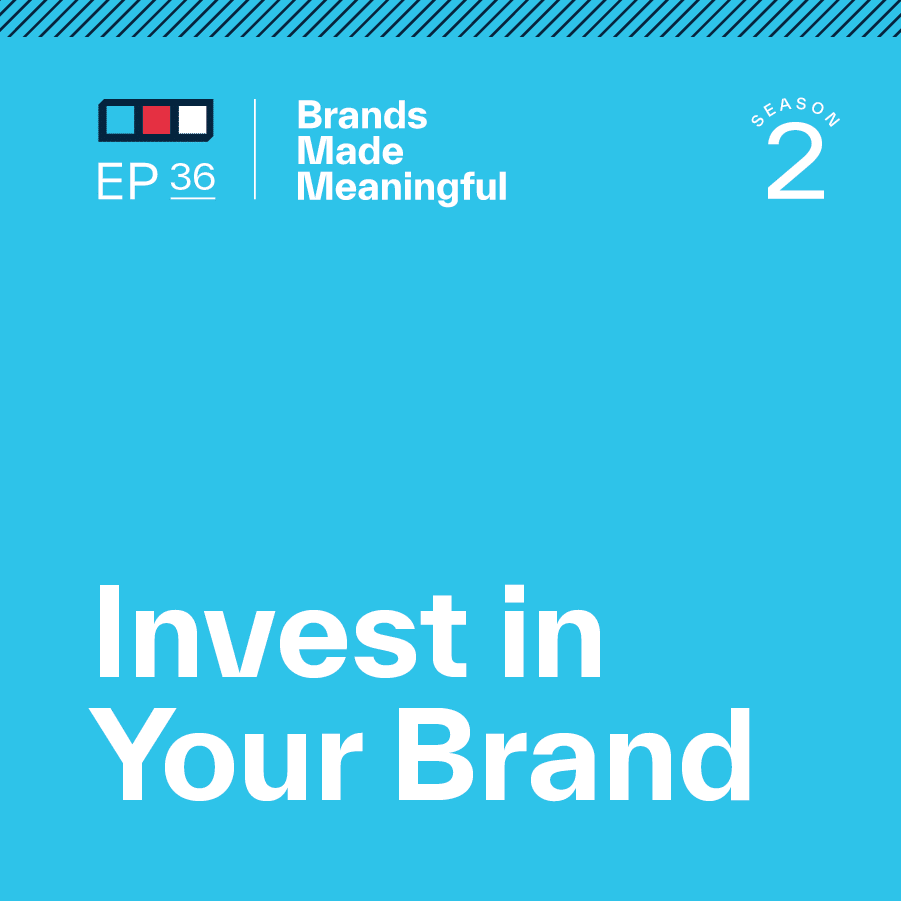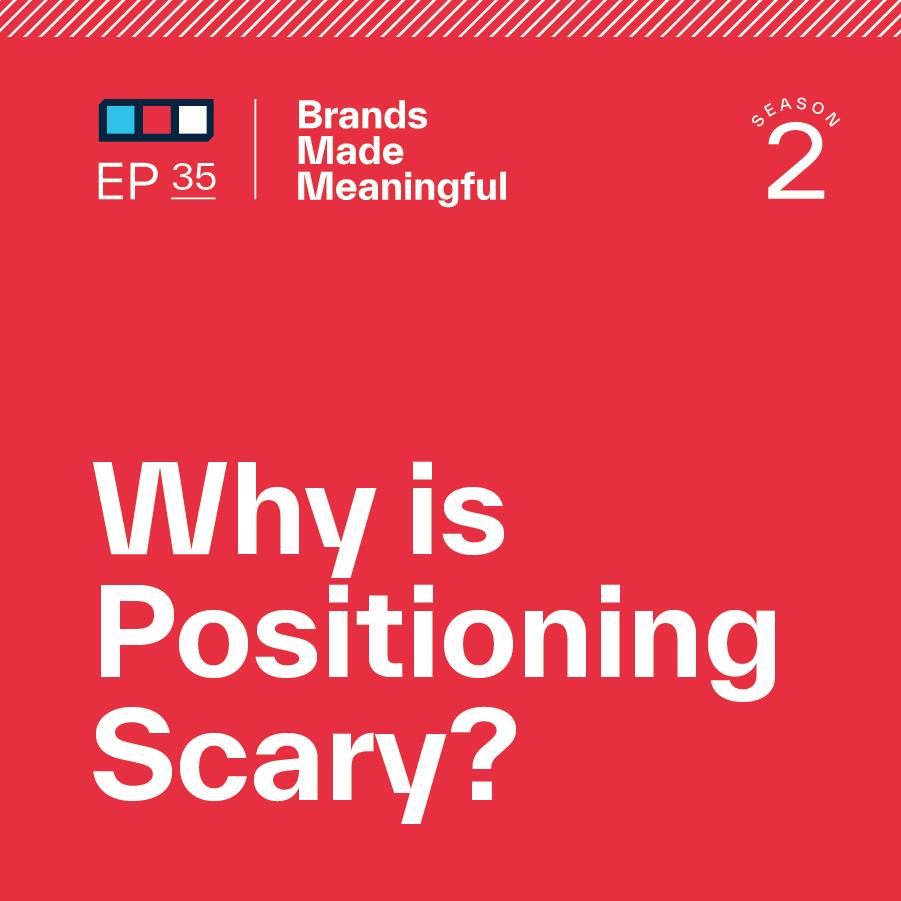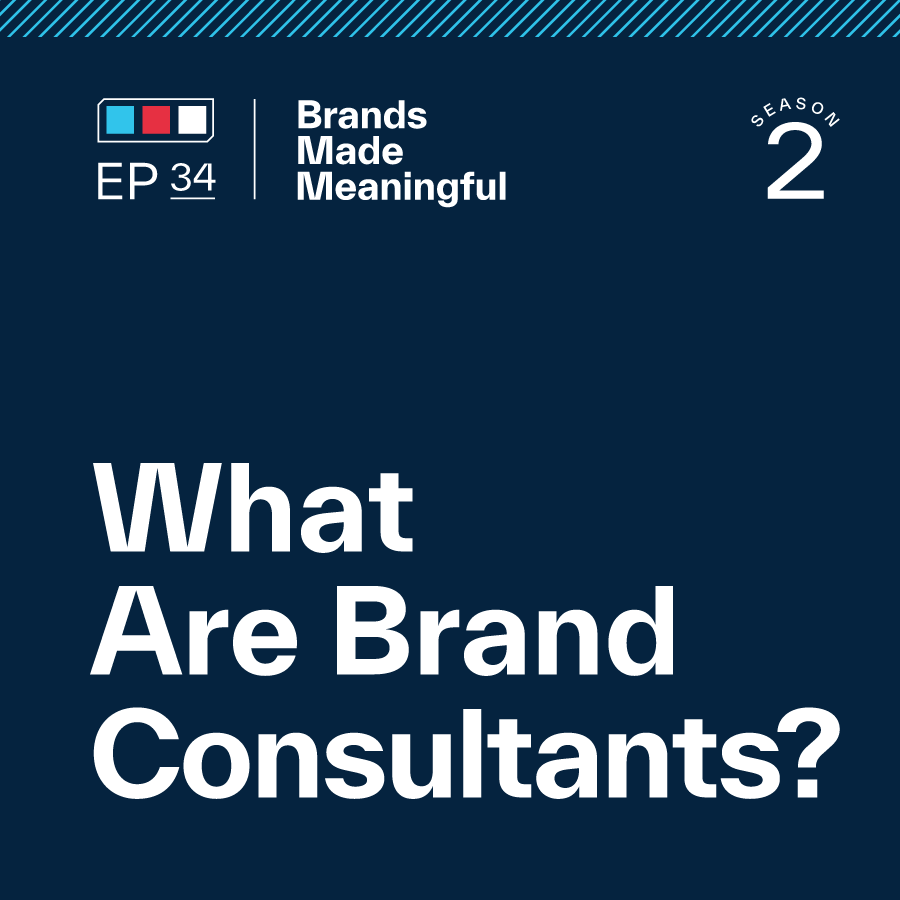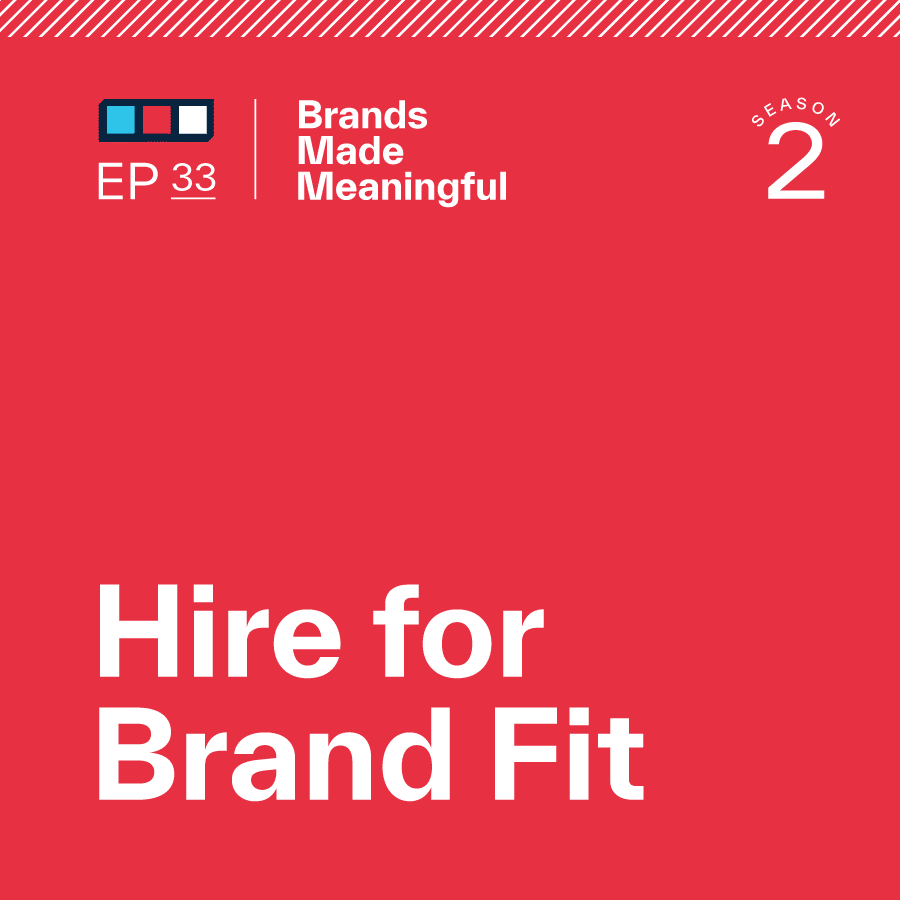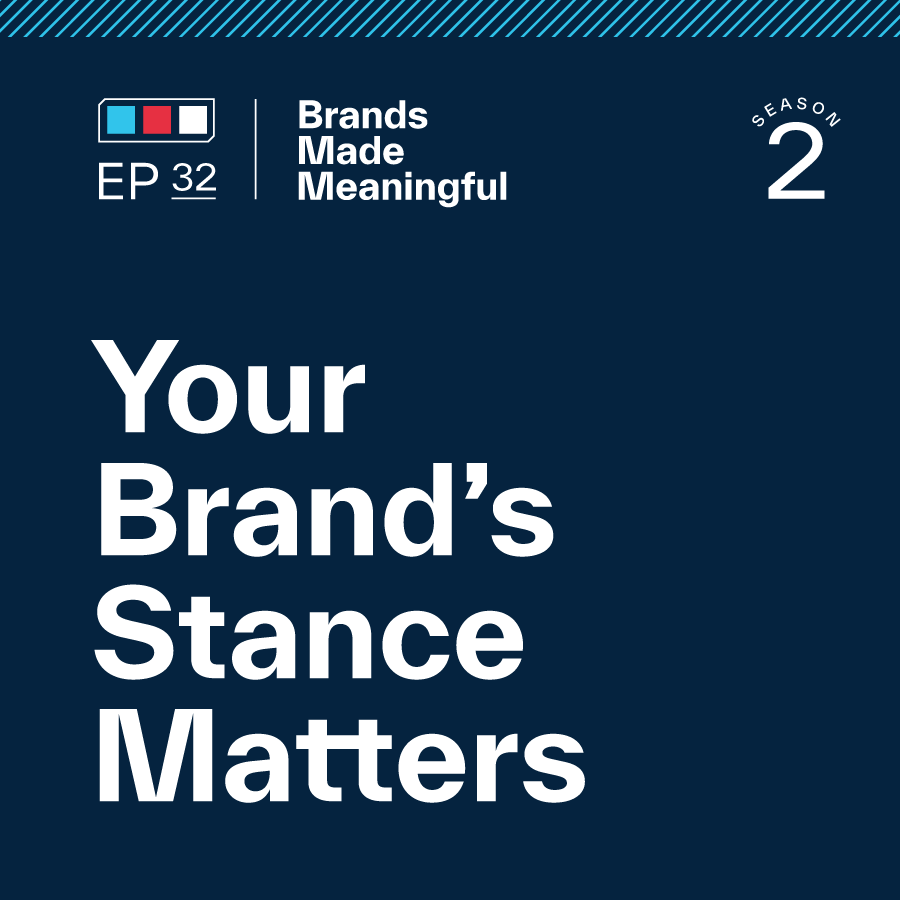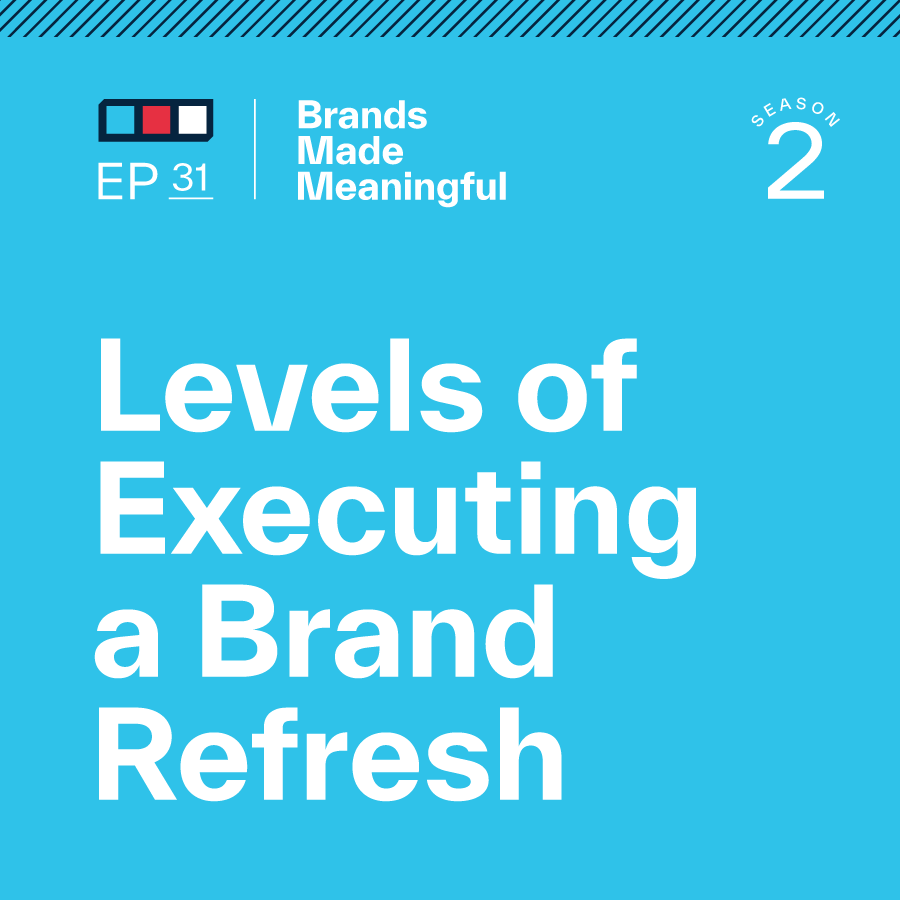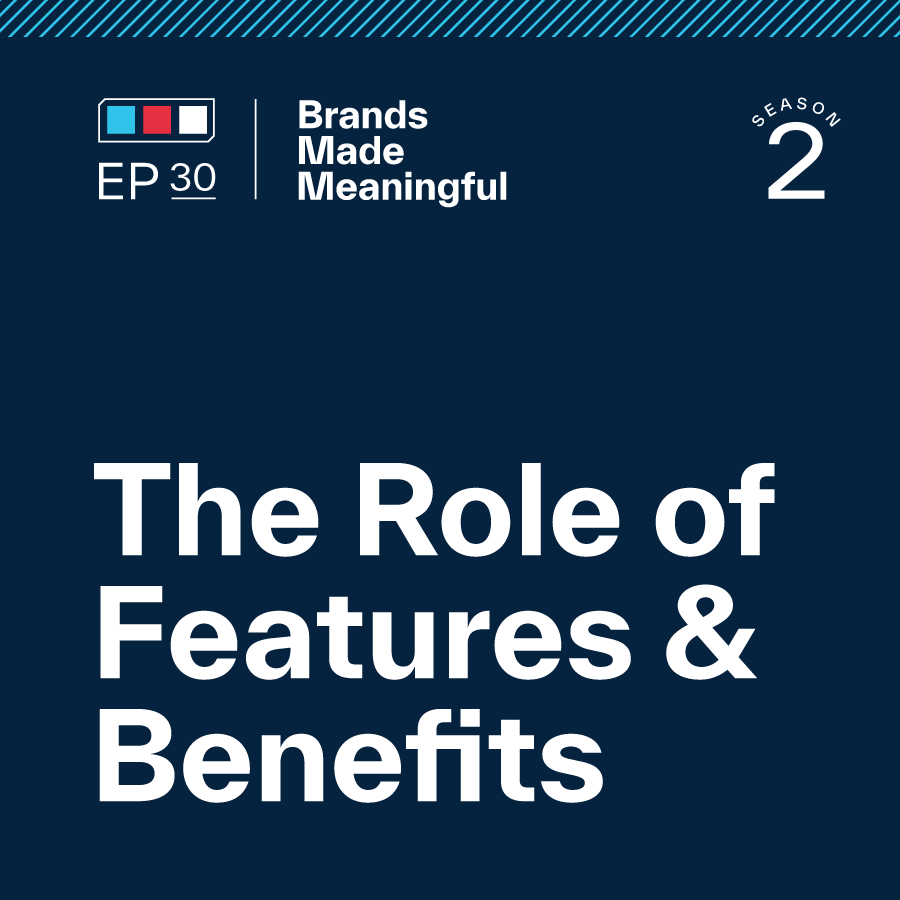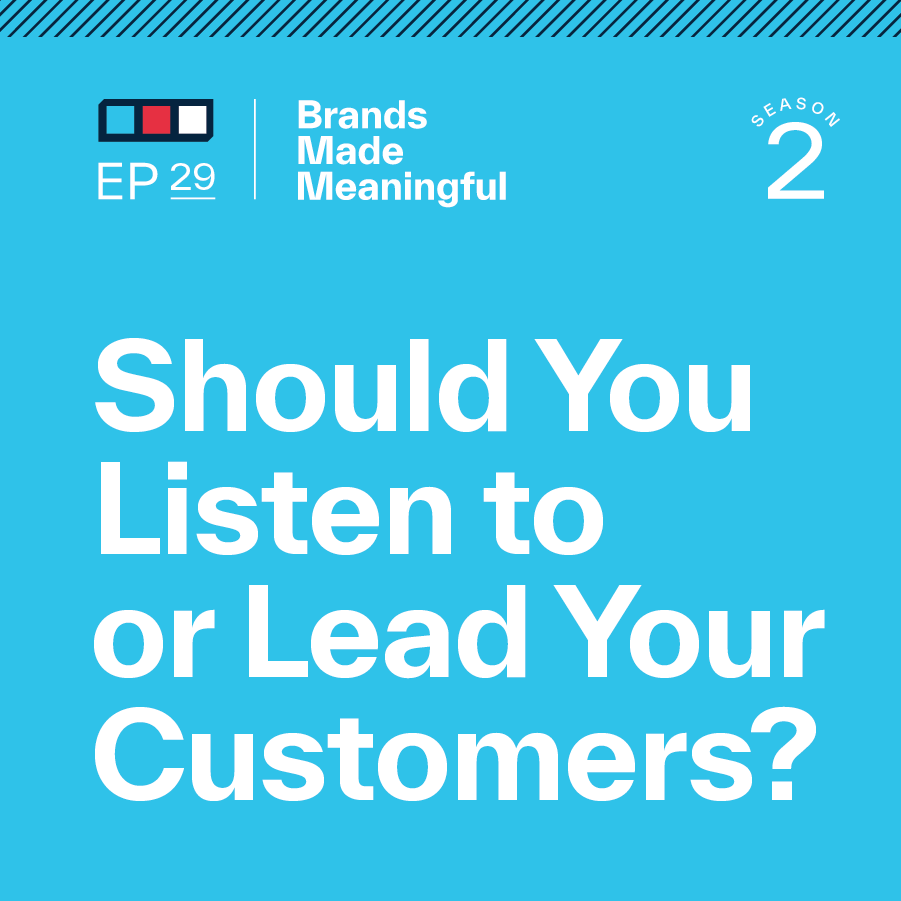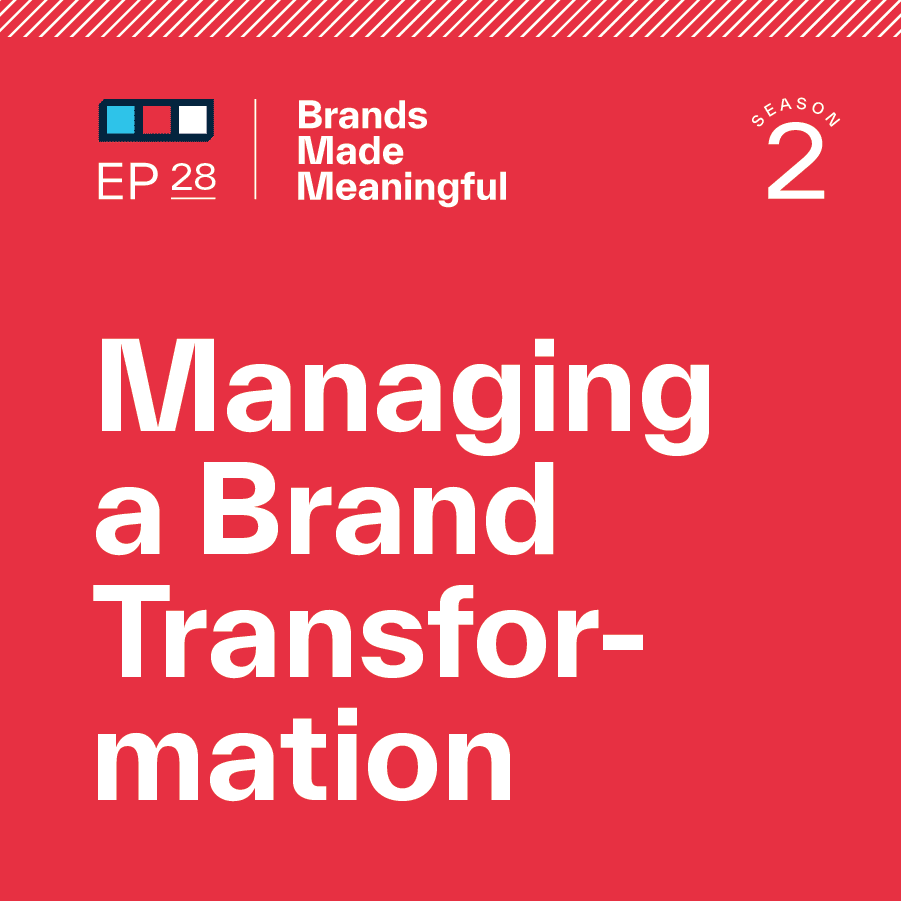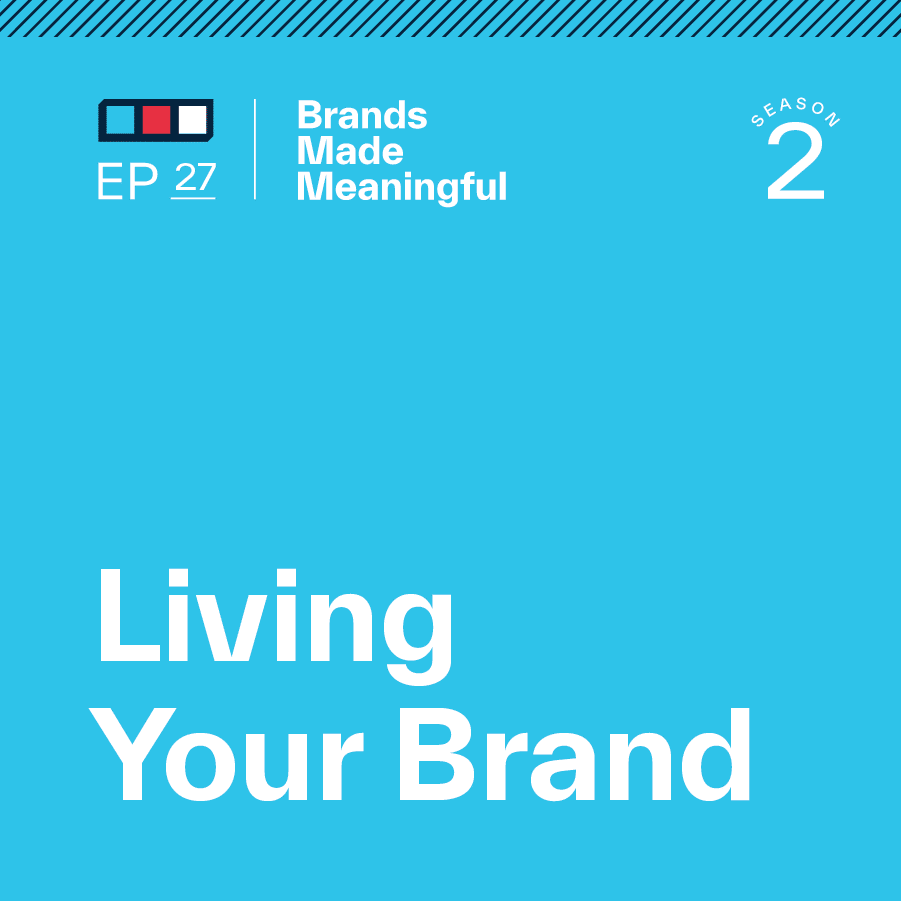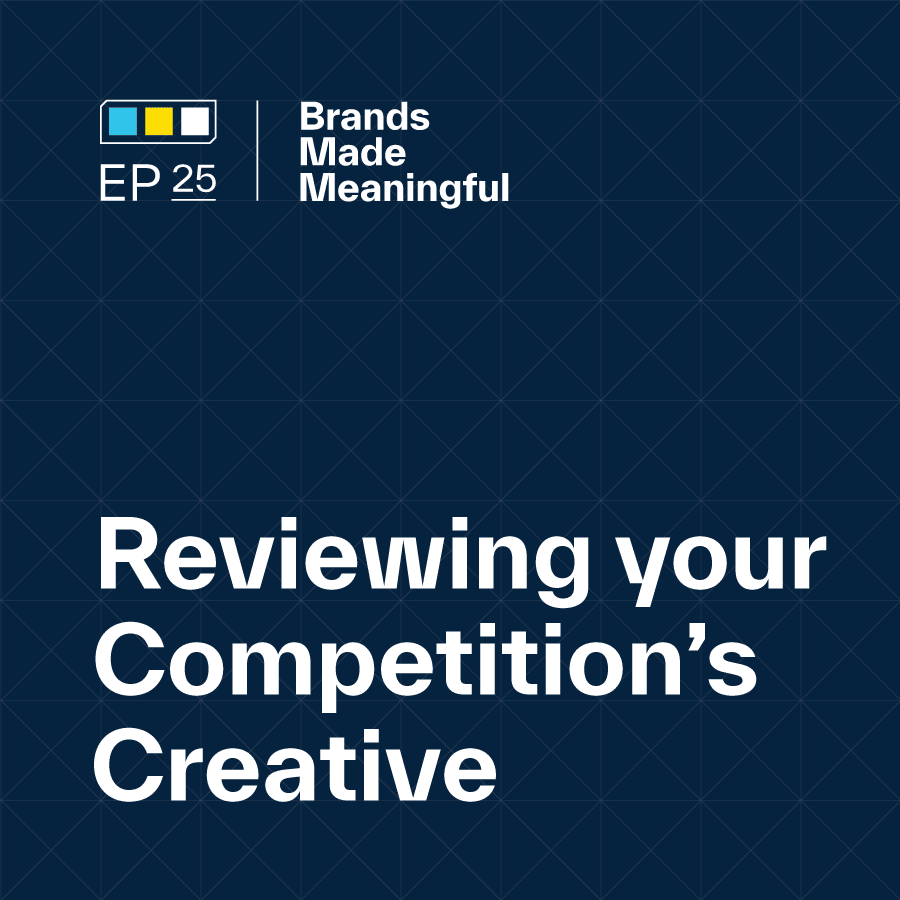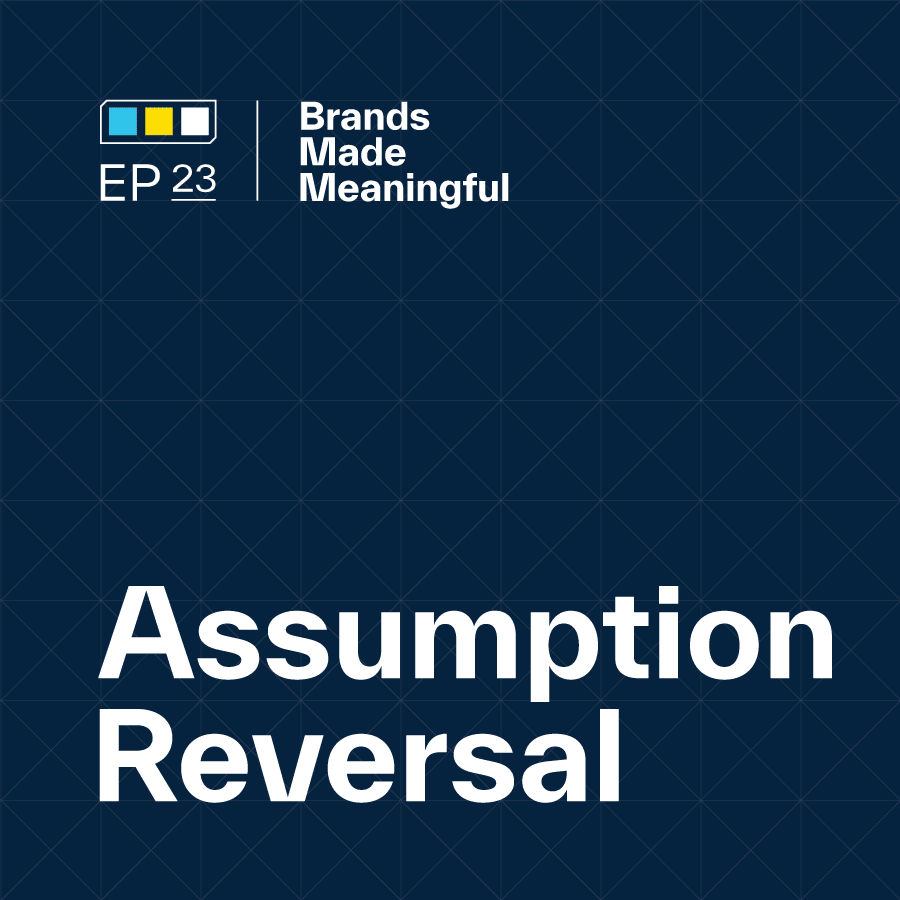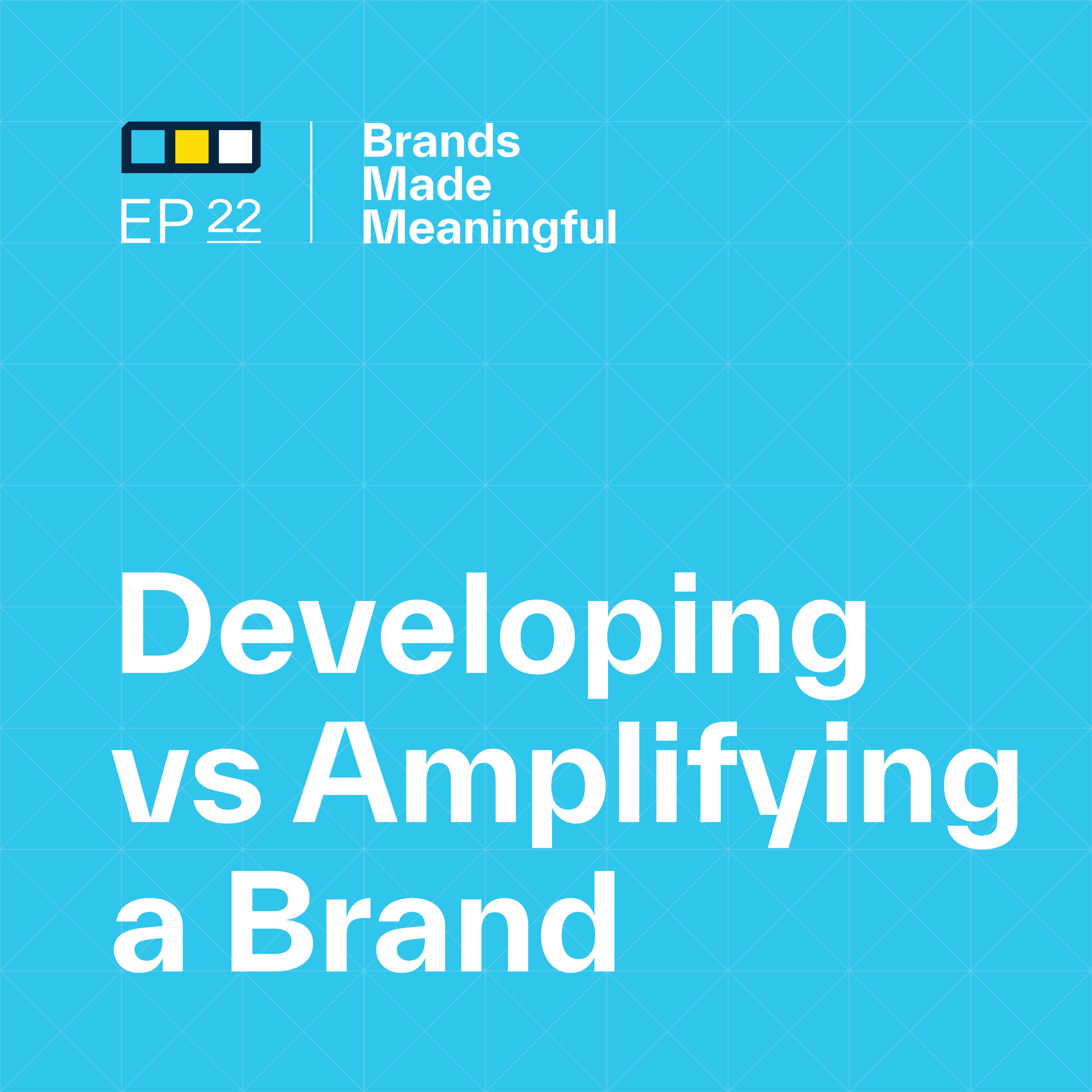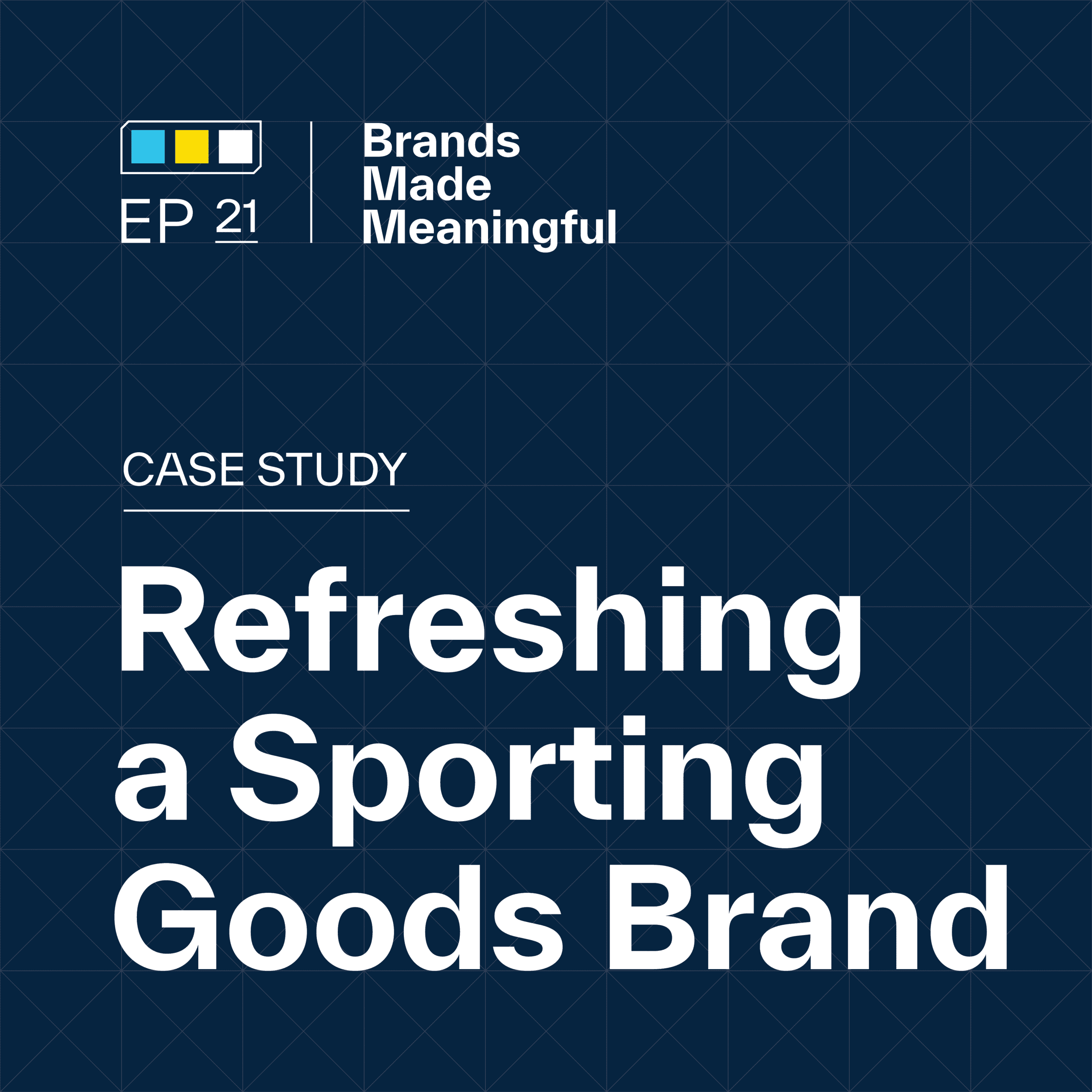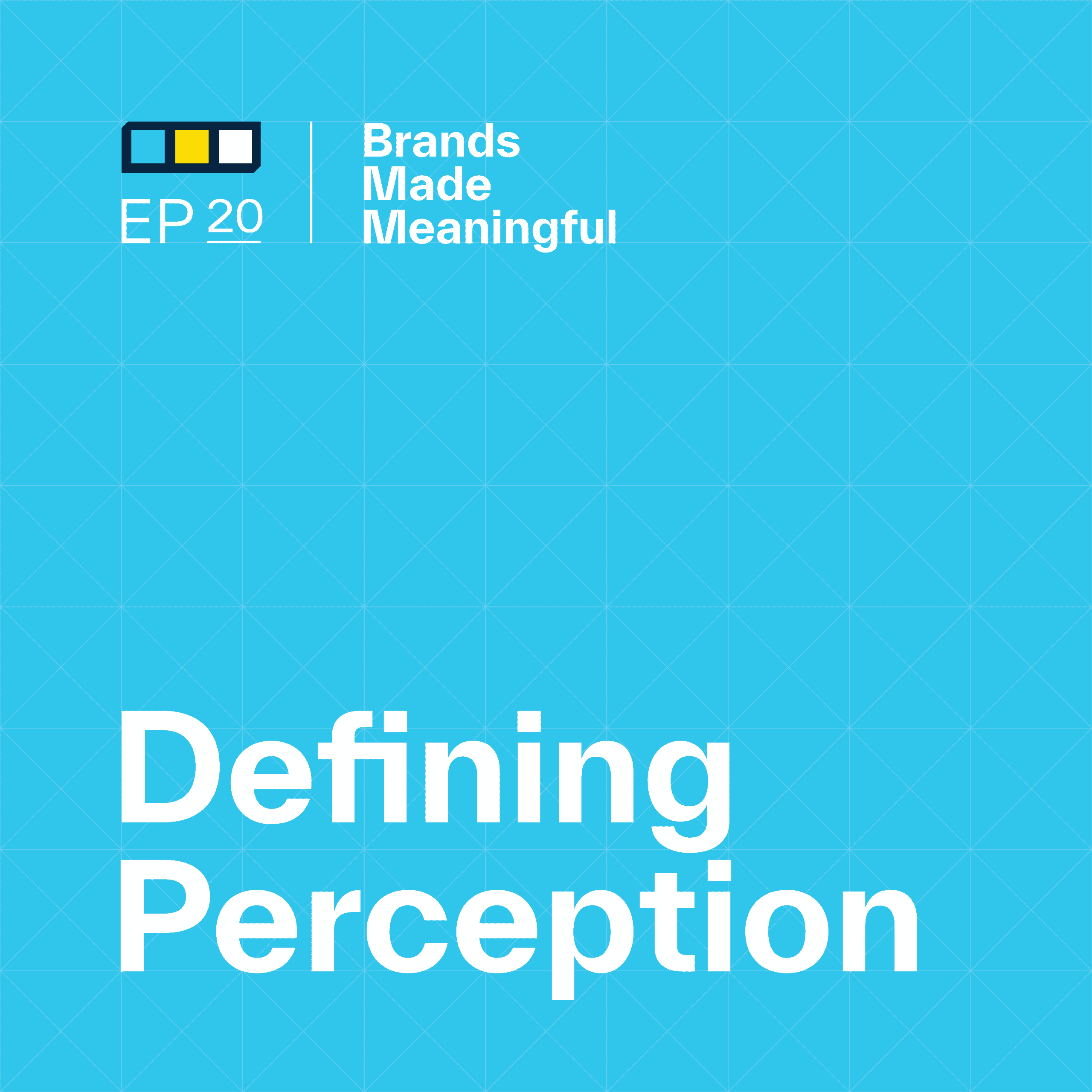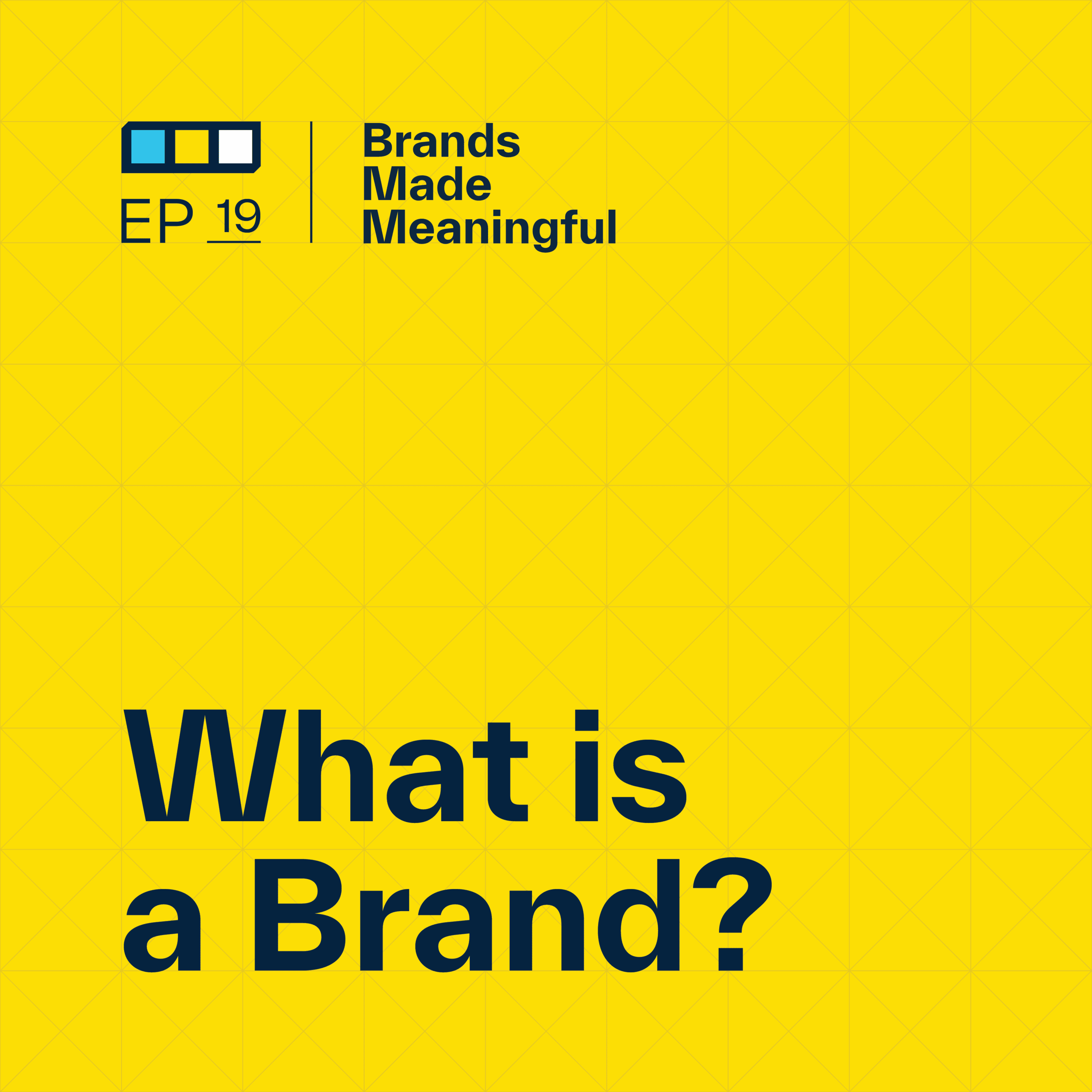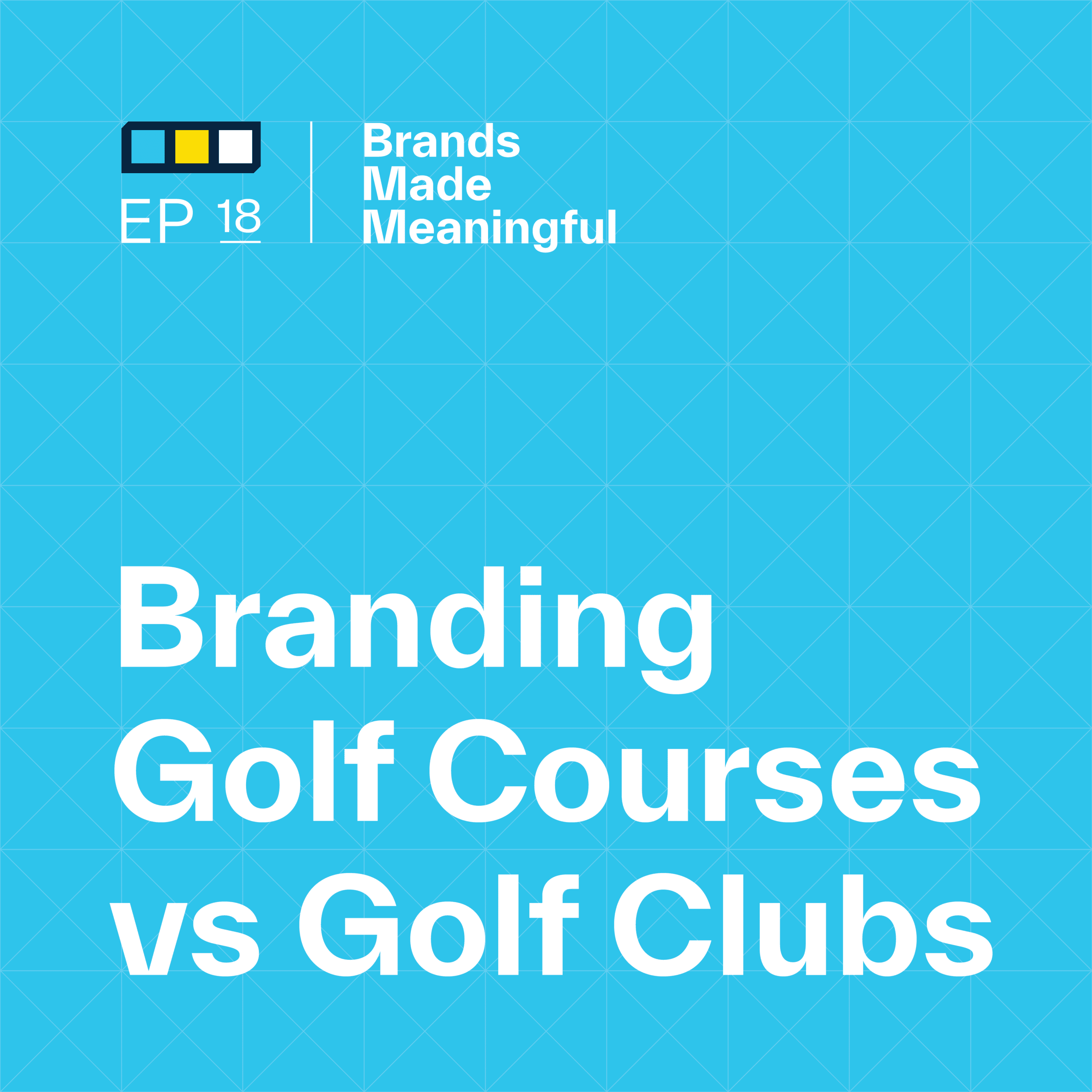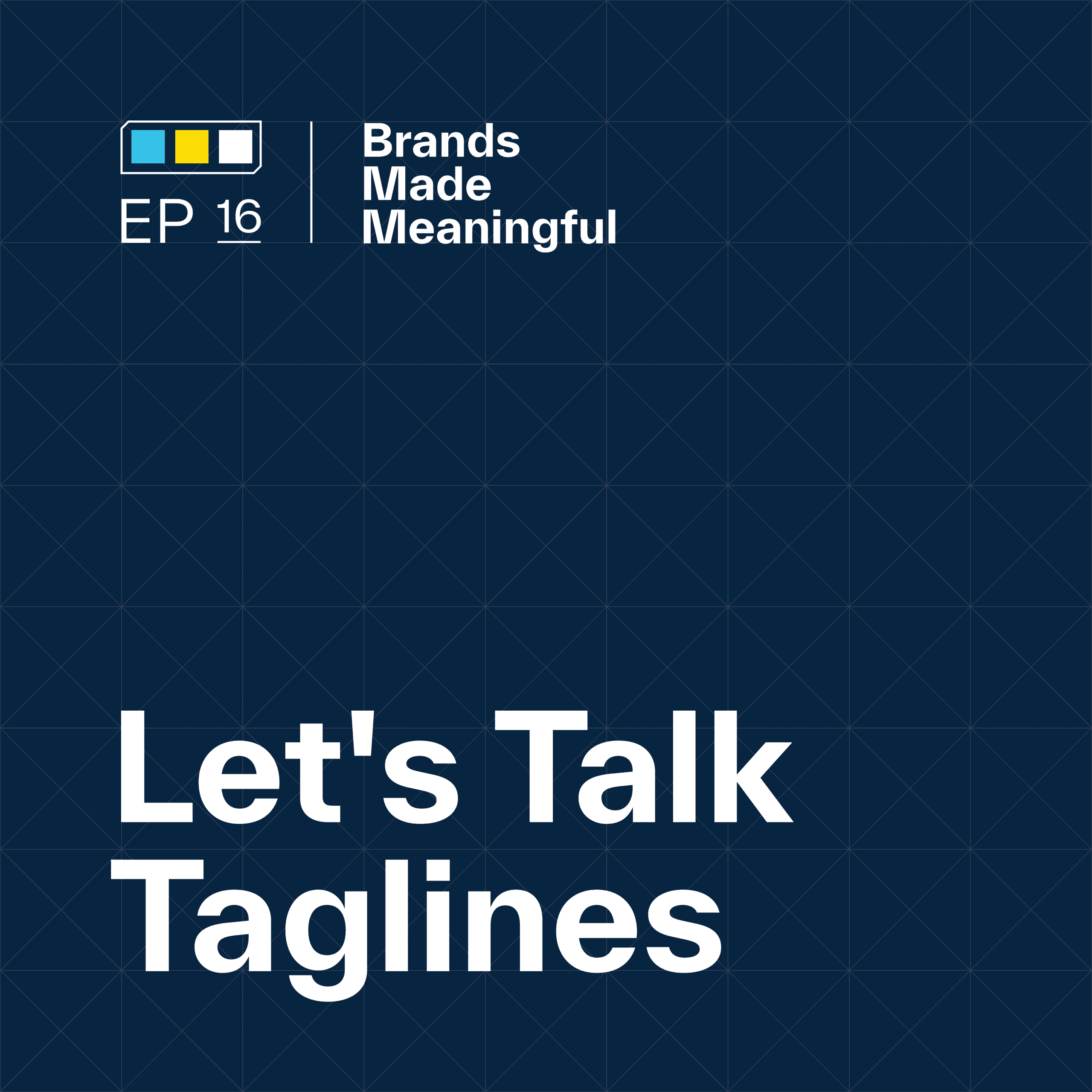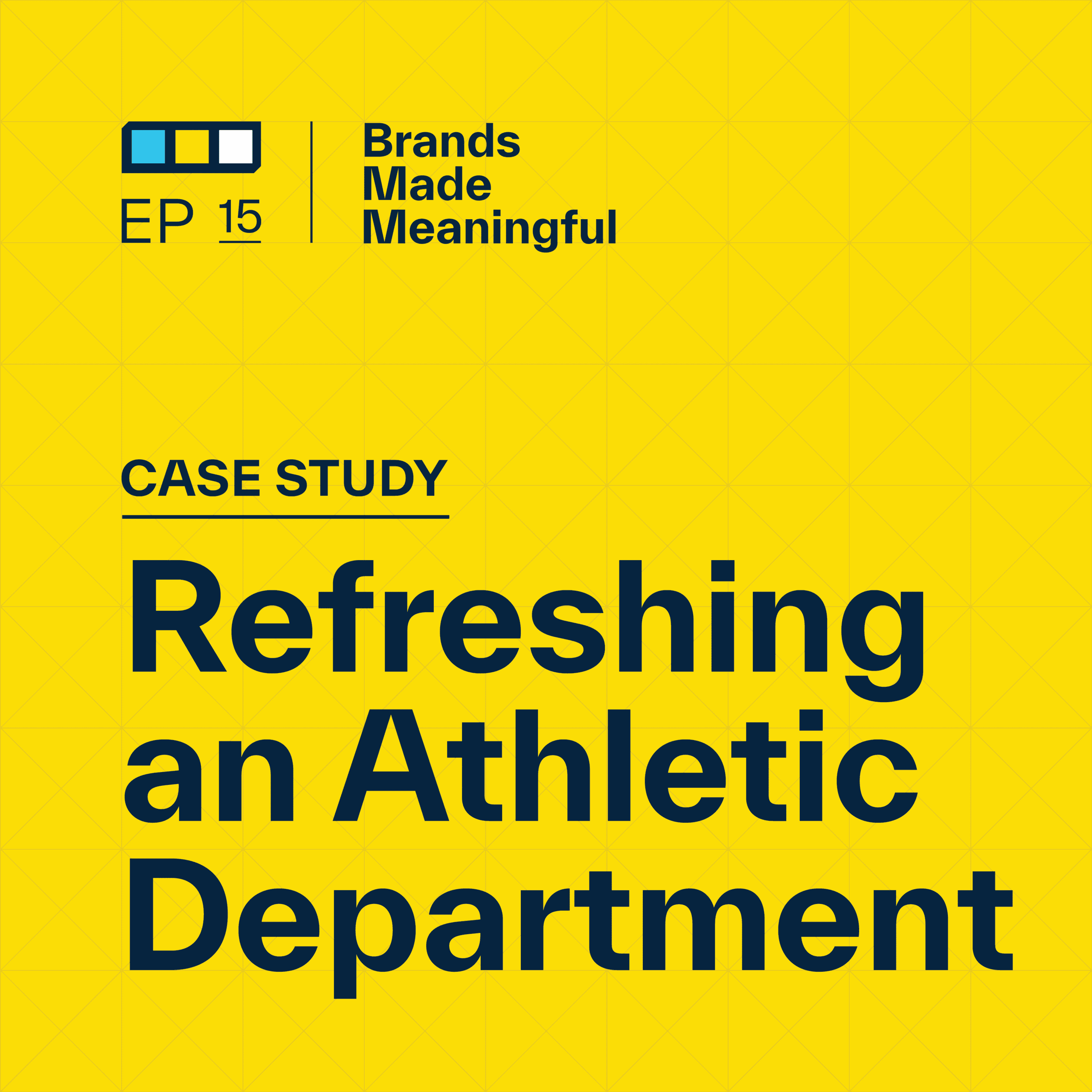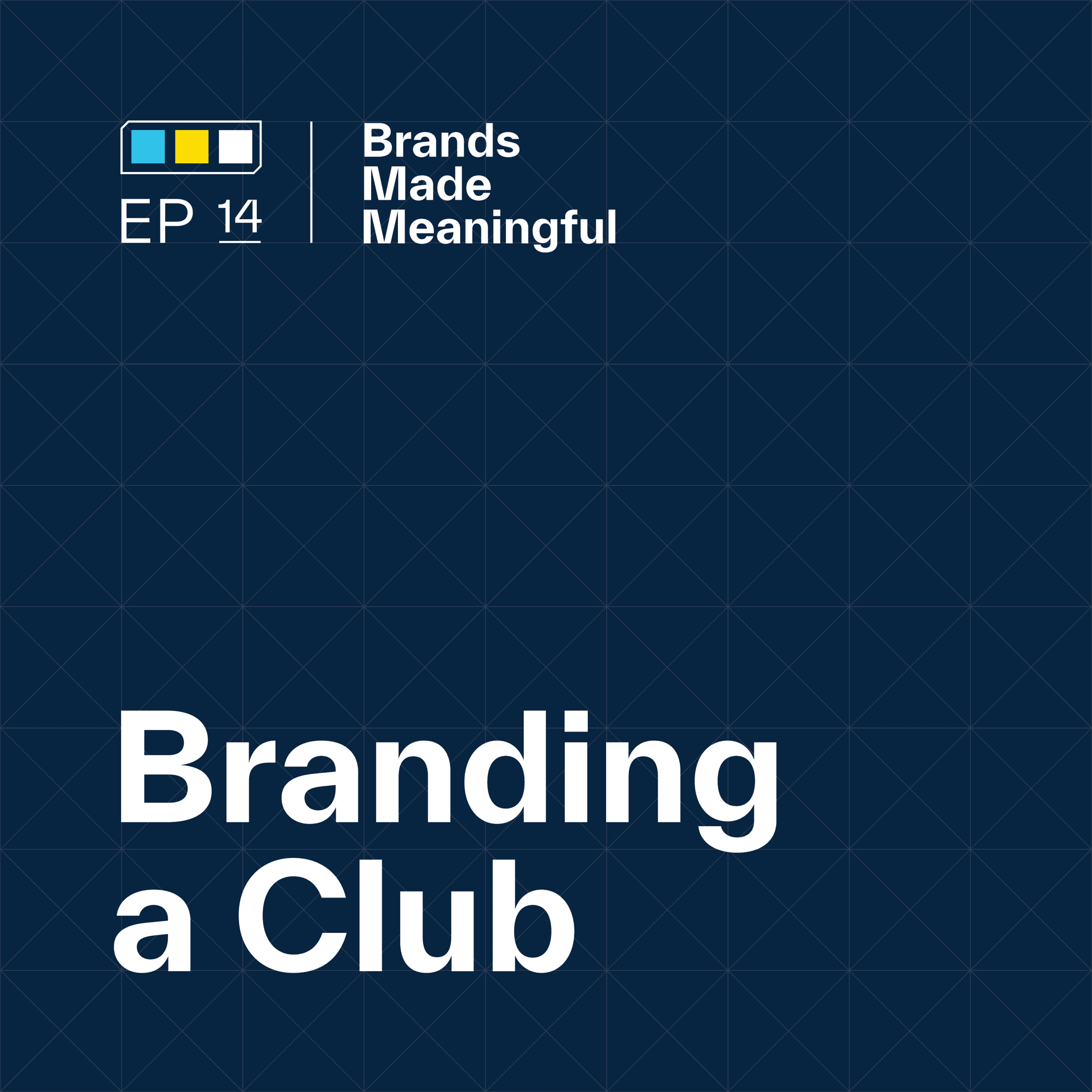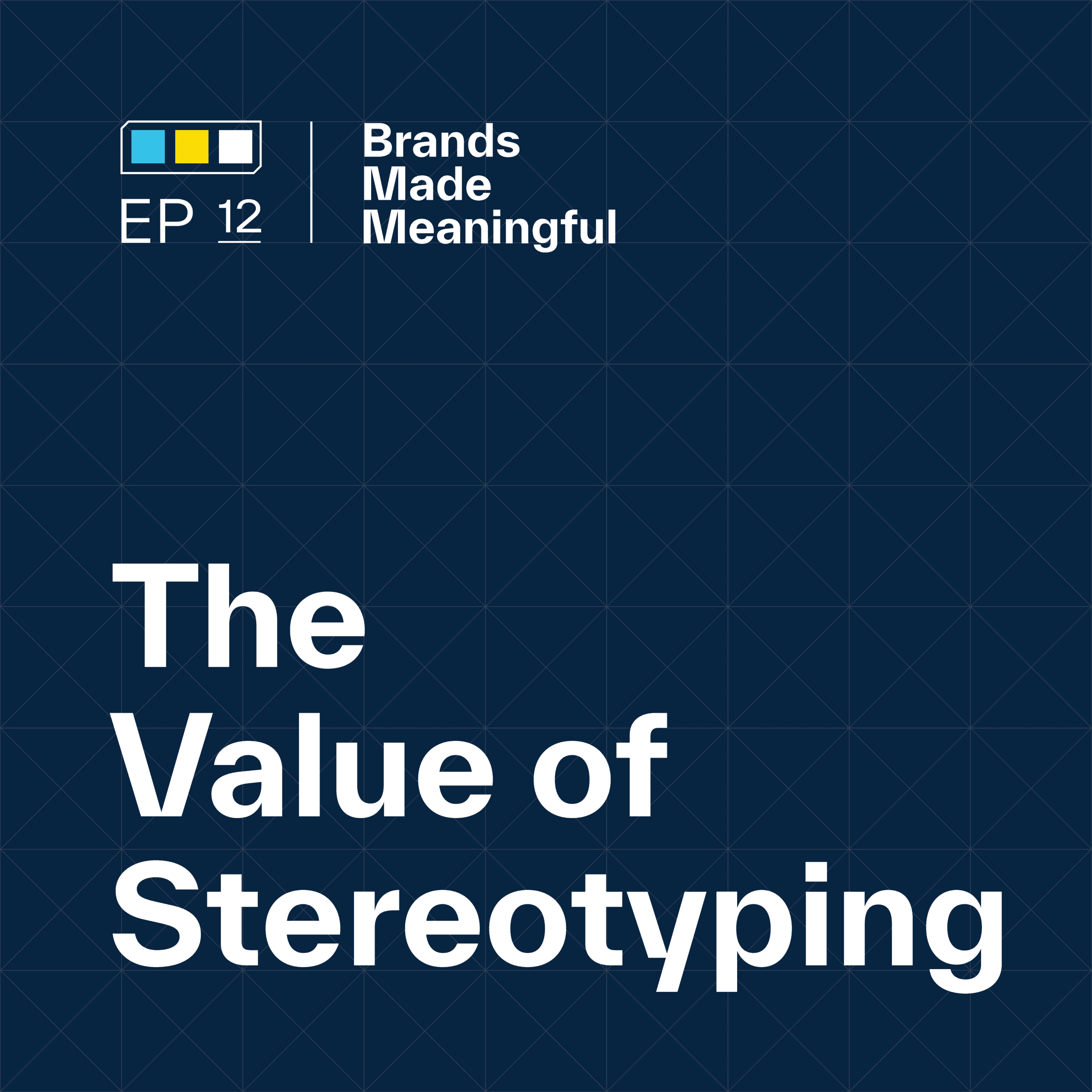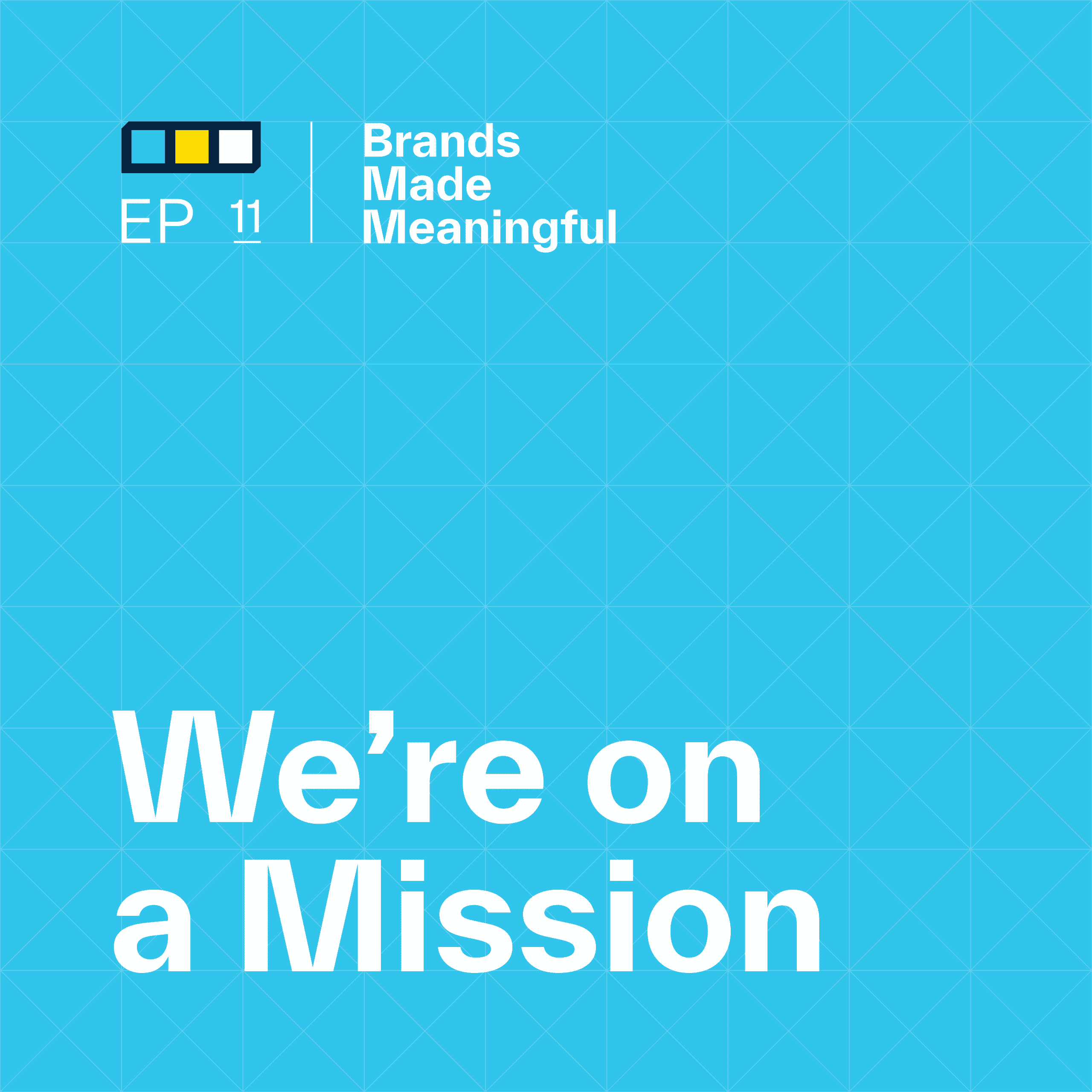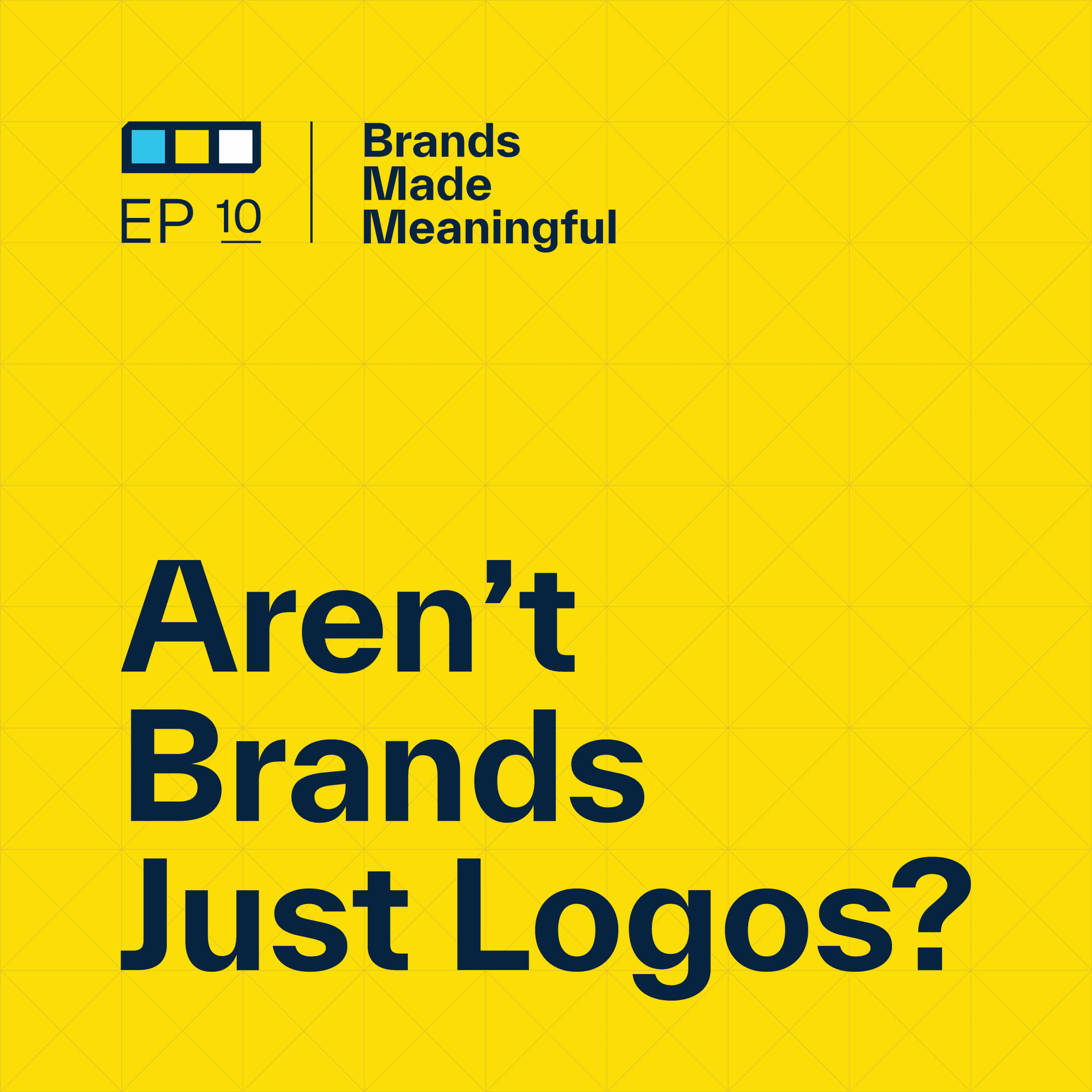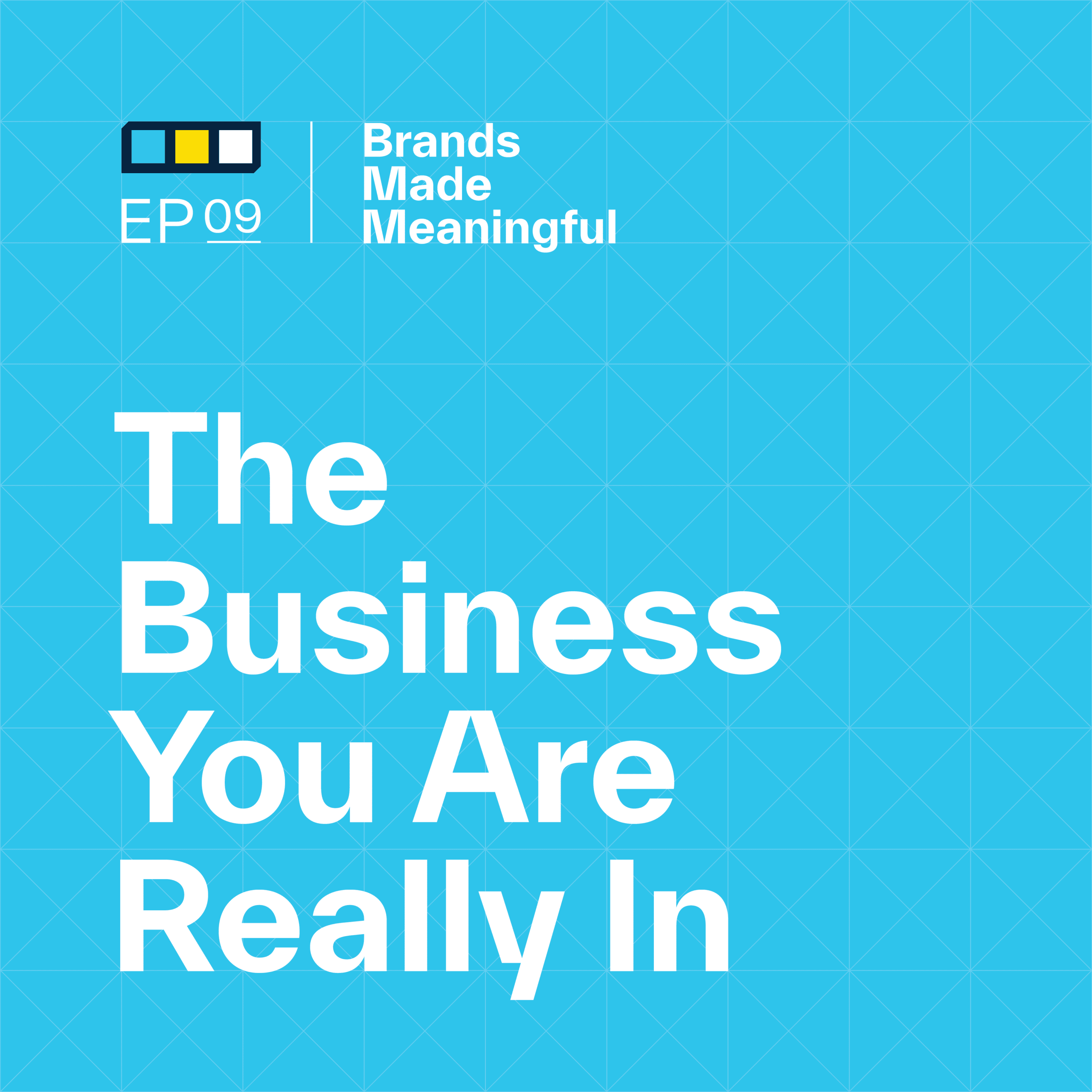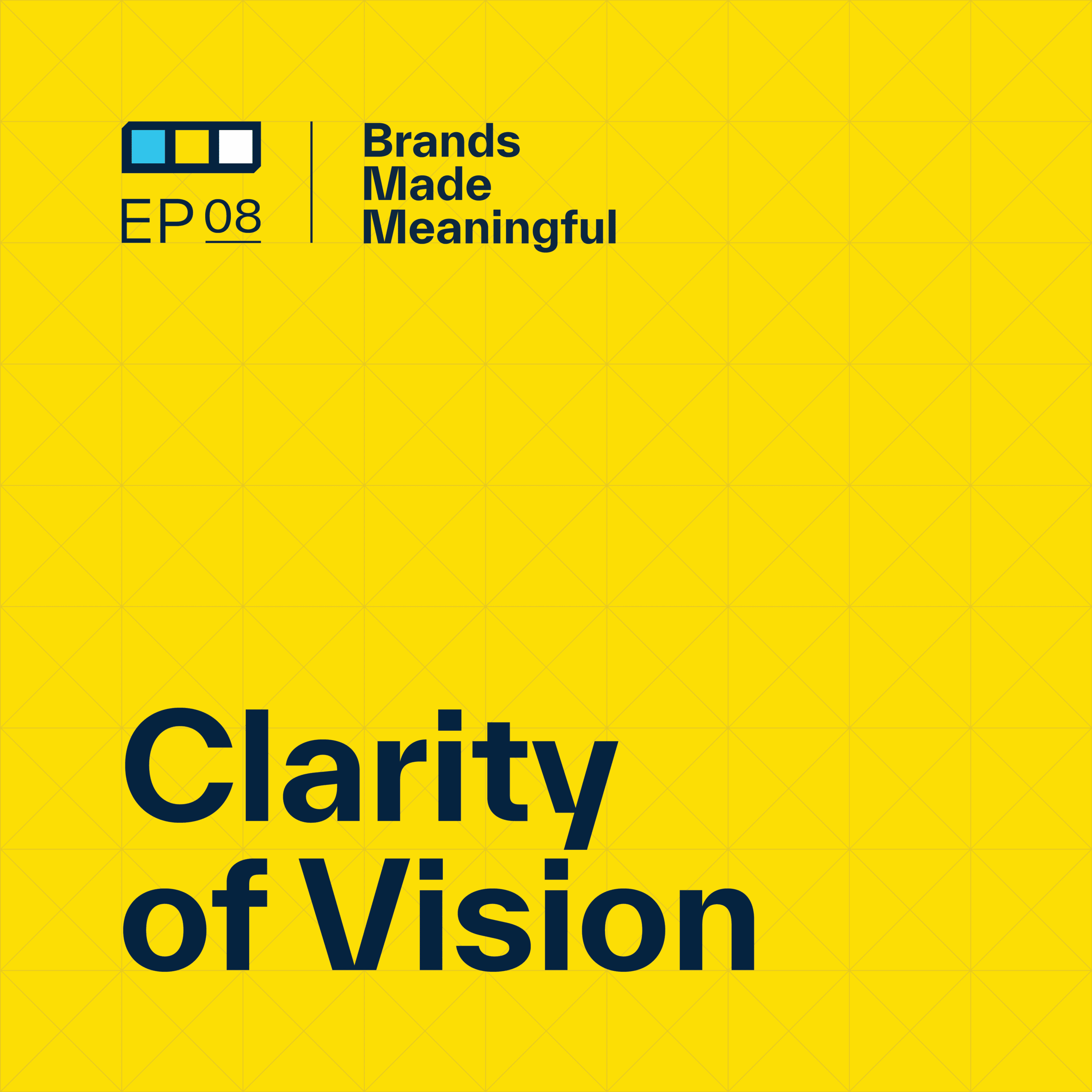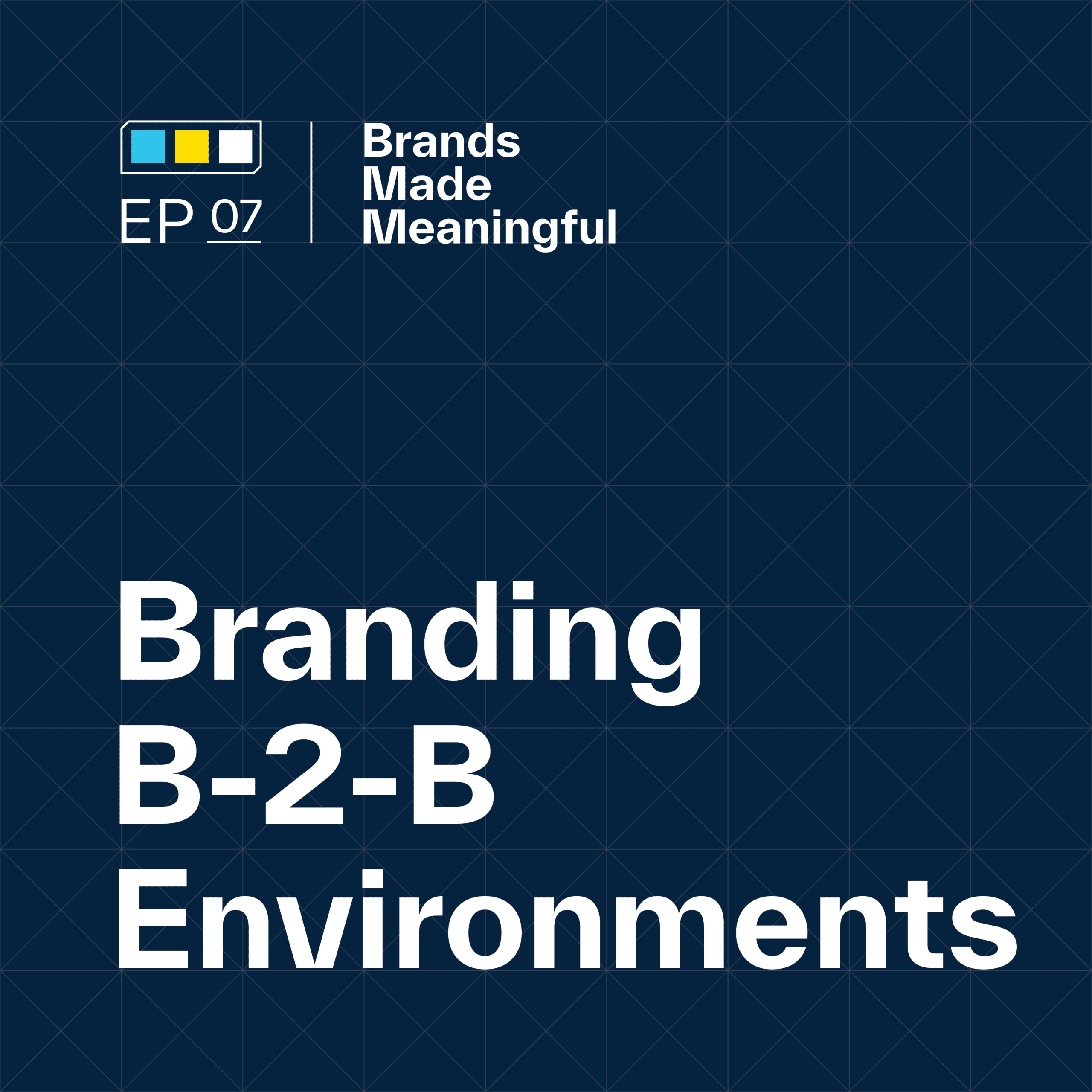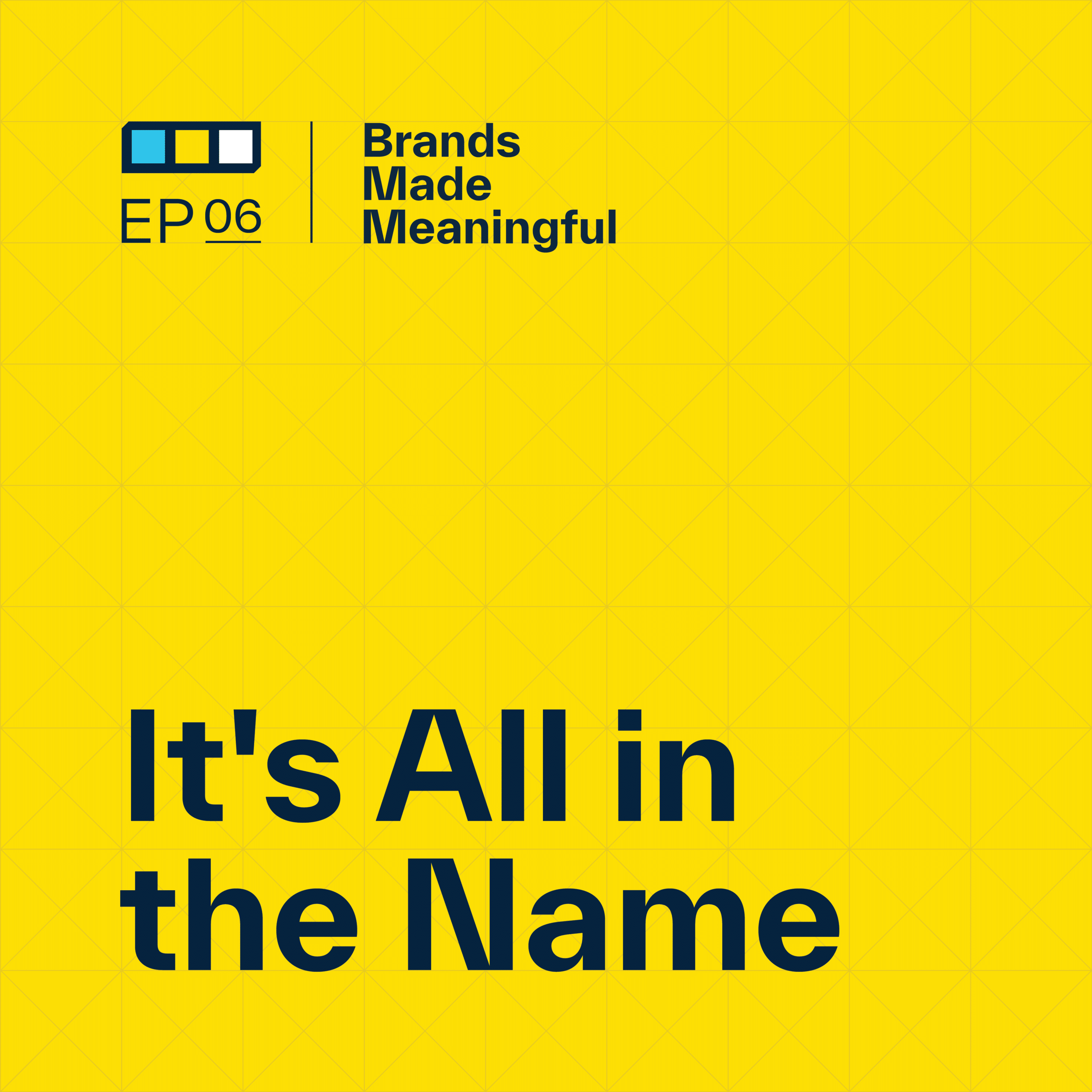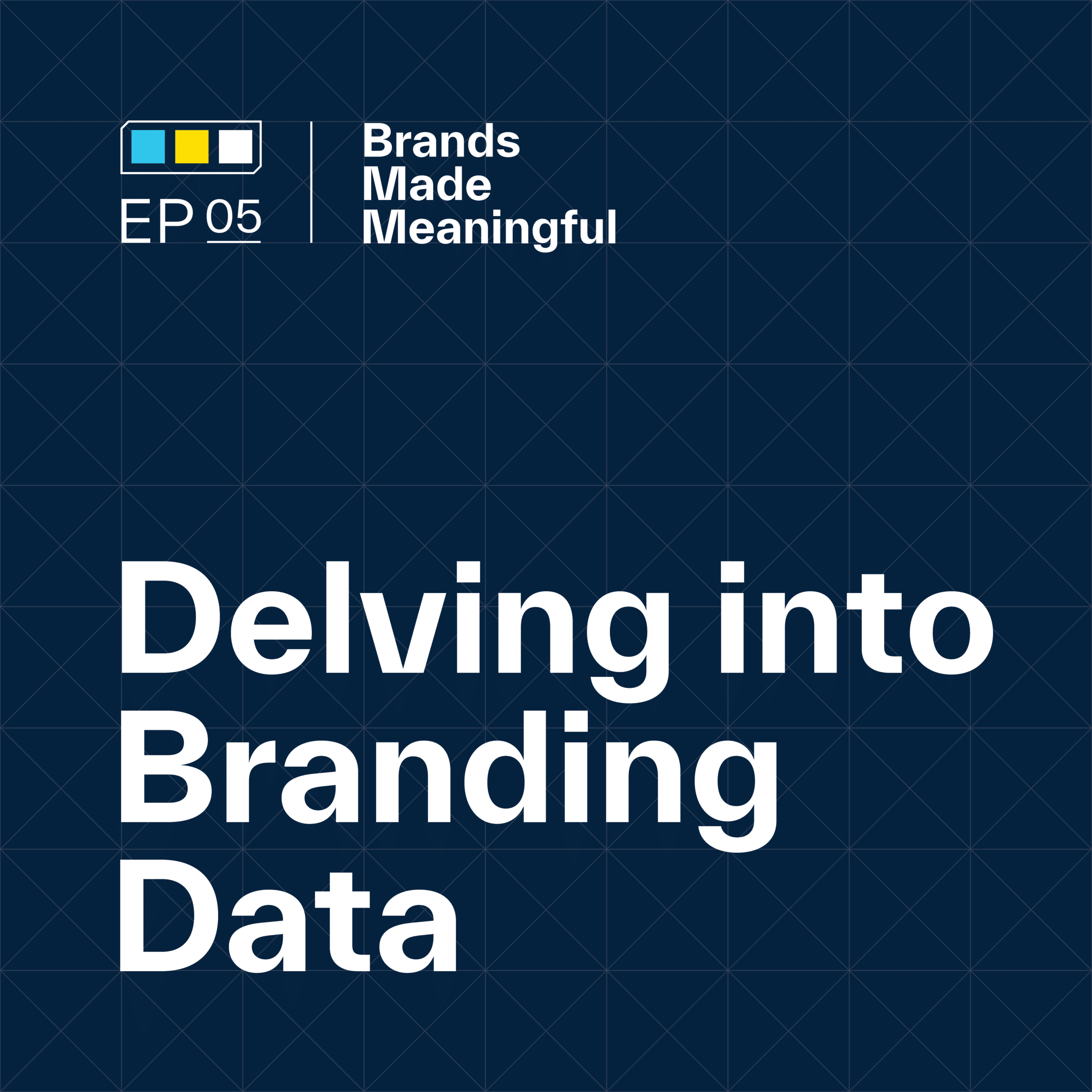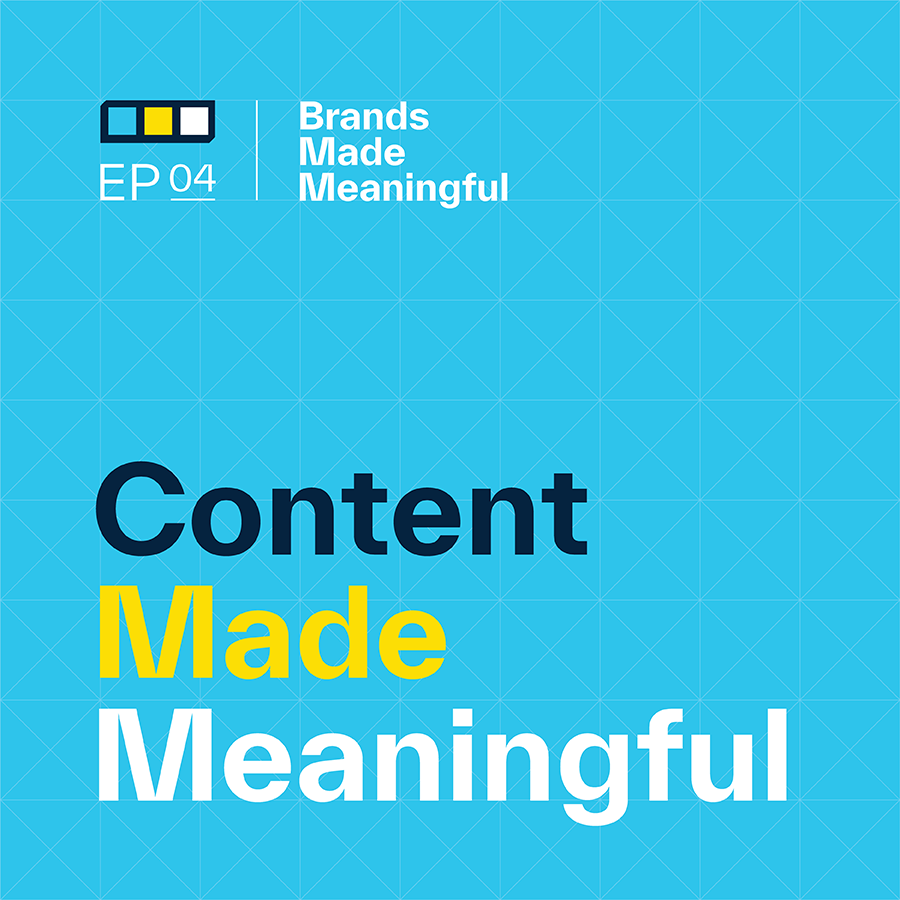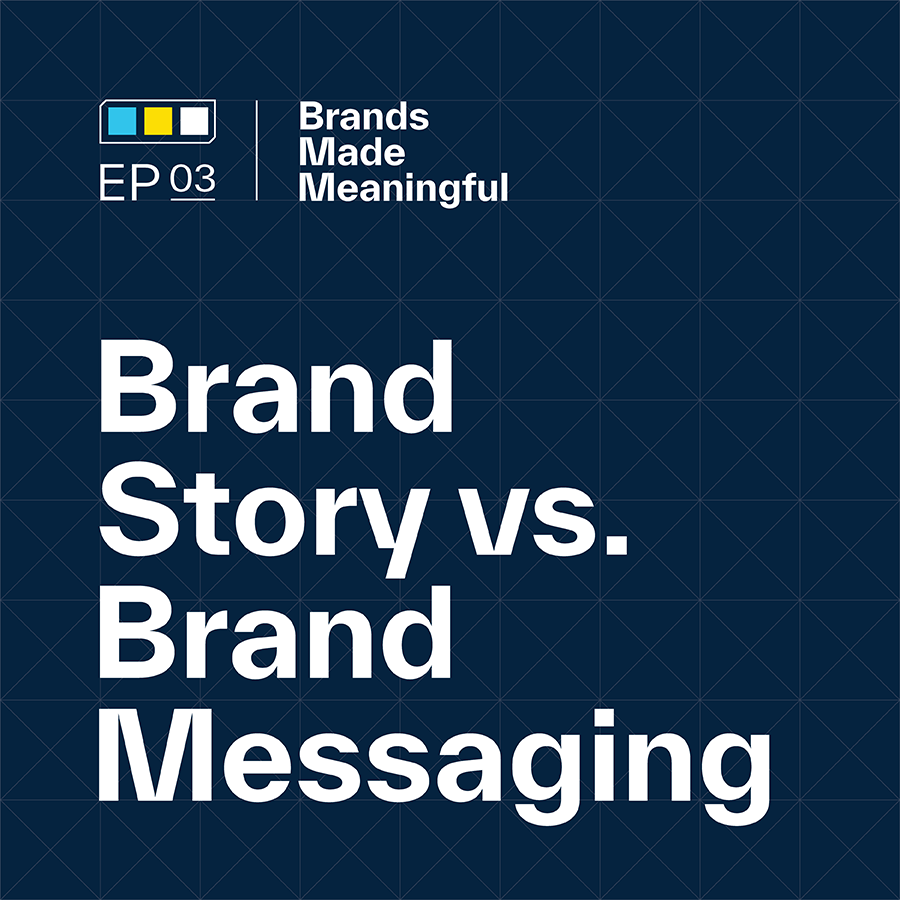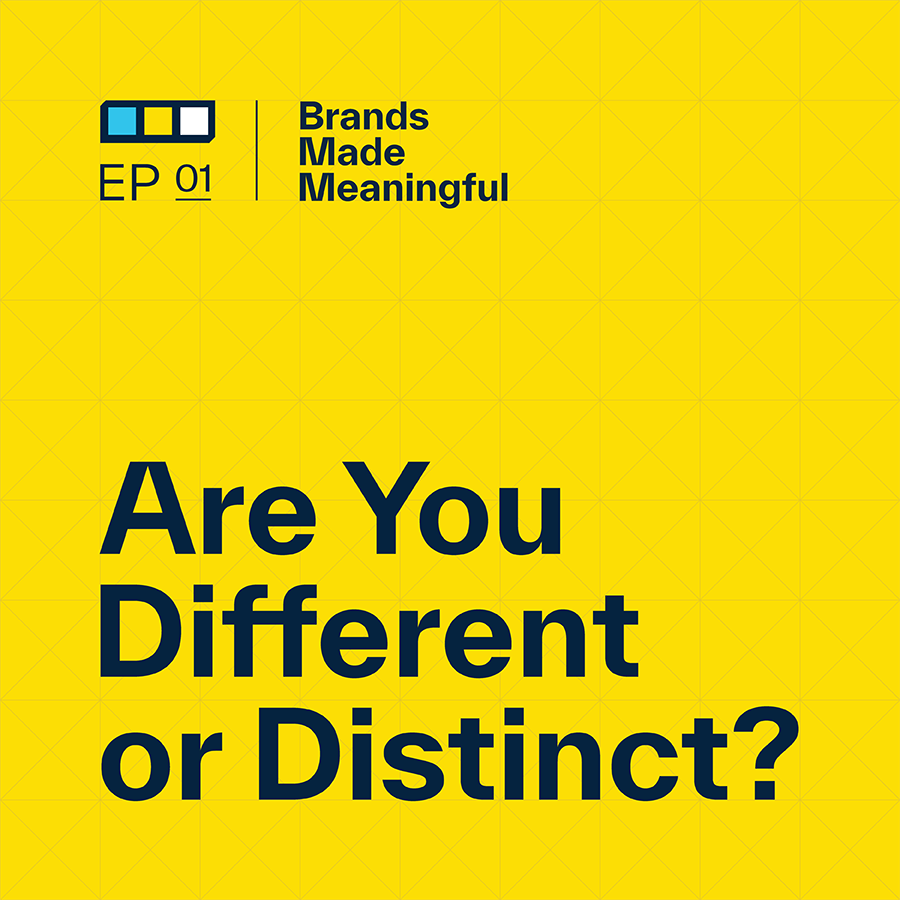EPISODE 02
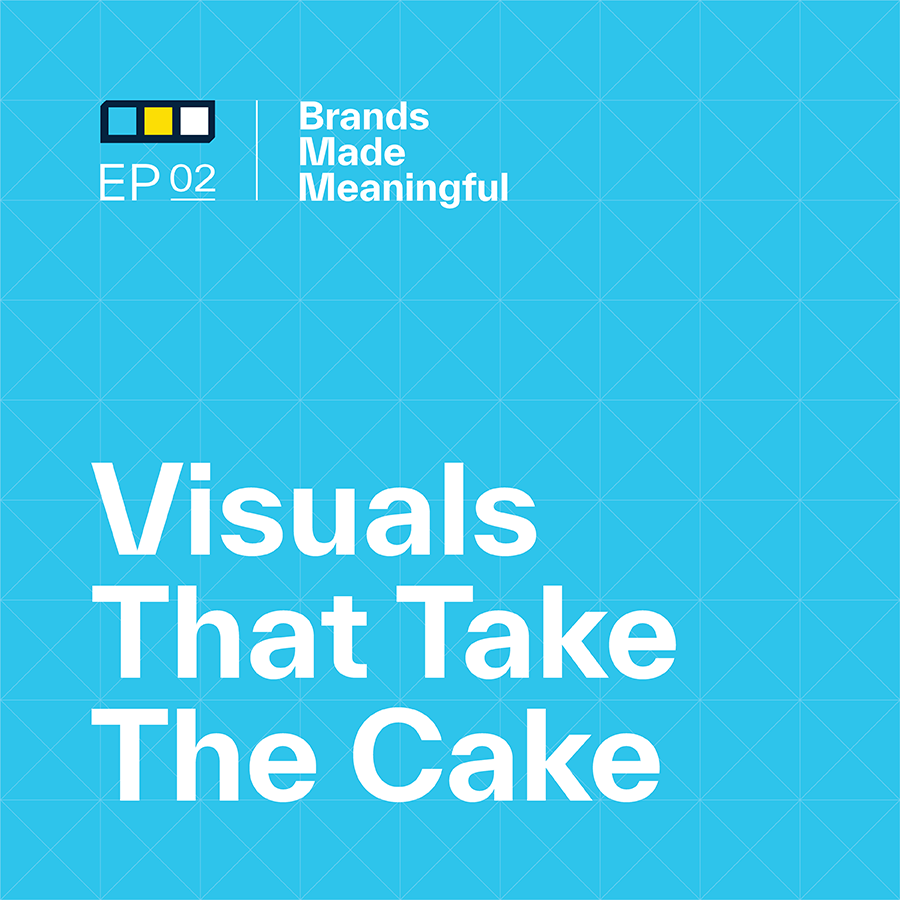
Visuals That Take The Cake
Episode 02
Derek and Tucker sit down to discuss visual impact and what that could mean for your brand.
EPISODE TRANSCRIPTION
Today we’re talking about visual impact, what that means for an organization, and what they can do about either poor visuals or uninspiring visuals.
Derek
Visuals that are part of your brand. So, visual impact when it comes to branding and marketing. Visuals is pretty broad, but they’re critical in telling the story of what you do.
Tucker
Yeah, visuals really need to do all the things that every other piece of your brand needs to do. But some people don’t think that; some people choose preference. They let themselves make decisions based on what their taste is versus what the market needs or what their customers or clients really would be attracted to. And this is where we get this option of not communicating or differentiating properly and you end up just becoming noise.
Expand Full Transcript
Derek
While whether you realize it or not (and I think a lot of us do,) in your own daily lives, whether you’re shopping for personal things, whether you’re vetting businesses to help your business to work with, you inherently are passing judgment on all of those potential purchases and relationships based on what they look like.
Tucker
Yeah, and for that you need to think about the two big things is being able to resonate, right? So when you walk by and you look at all those places, some of them resonate, some of them don’t based on you might not be the target market for everybody. And that’s OK, you’re not trying to resonate with everybody; you’re trying to resonate with a specific person. And then two, it’s authentic. It’s not just super trendy. It could be anything. It could be for anyone. We’re trying to get down into those visuals that really tell your story, not the story of other people.
Derek
Yeah, and this is this is a term that people use, might not be the term that creative educators use, but what we’re talking about is the look and the feel of your business.
Tucker
So when we’re talking visuals, how about you list a couple that we’re specifically talking about; those tools that we use?
Derek
Absolutely, the first visual I think a lot of us gravitate towards is your logo. The mark, the symbol that goes on your business card, on your letterhead, maybe it’s even sewn on the front of your shirt.
Tucker
Yeah, but it’s more than that, right? I mean, most people think of visuals or most people think of branding as your logo. And I had a conversation with someone after work a couple of weeks ago and they said, “So what do you do?” And I go, “Well I’m in branding,” and they said, “Oh, so you design logos?” And I kind of explained to them, that maybe, I don’t know, 10 percent of what we do is logos. I mean, that’s just that cherry on the top of a rebrand. It’s just a piece of all of that. So what about some of the other visual elements that we work through?
Derek
Key components of those visuals would include color, photography, what type, style, and point of view those photos specifically are taken from. There are all kinds of components that we would put into a creative visual toolbox to help you build out your materials. Patterns, textures, badges, iconography, symbols, all kinds of things; but it’s way more than just the logo.
Tucker
Yeah, and most people go, “Well if it’s so much more than the logo, why do you start there?” In our process, always, the first visual element that is created is the logo. Which is because everything is built off of that logo, right? That’s that big signifier that then trickles down into all the other elements.
Derek
The logo is the flag. The logo is the first thing. It’s the it’s the flag that you’ve staked in the ground that, when done really successfully, should stand for all of the things that your organization stands for and then is supported by all of these other visual assets. And without these other visual assets, especially if those visual assets aren’t rooted in a deeper meaning around what you do, quite likely that logo is going to fall flat.
Tucker
For sure. So why is having poor visual impact important? Why? Why do we care?
Derek
It’s a problem if your visuals aren’t impactful for a variety of reasons. First and foremost, it’ll hurt the perception of your brand. If your visuals aren’t strong, if they don’t reflect what you do, if they’re not attractive to the audience that you’re going after, (whether that’s an internal audience or a customer based audience) if you aren’t intentional about crafting how you want to be perceived, people will craft their own perception for you. And that quite often won’t be the perception that you want them to have.
Tucker
I think the best example that we talk about is the label on the box, right? If you don’t have a label on your box, then people are just going to label it themselves. And our opportunity with visuals, I mean, we do it with everything else, but specifically with visuals is to label that box and to make someone feel a certain way about it. And when you say the brand’s perception, it can really be weakened internally and externally. I think of opportunities of clients that we’ve had where they roll something out and their internal audience is just so elated by it because they’re like, “This is us. This feels just like us.” But there’s opportunities or circumstances where people have rebranded in other parts of the country and they’ve not heard that kind of welcome.
Derek
When you get into that, what we would call the red flags of saying, “Well, how do I know if the visuals of my brand, of my organization, of my marketing materials, that there’s a problem?” One of those problems is completely the internal side. If people internally aren’t excited about what you look like, they’re not excited about wearing that branded swag. If you roll out a whole bunch of super cool branded sweatshirts and you find out that nobody’s wearing them, that might be a red flag.
Tucker
Yeah and if we’re talking about red flags, I have three big ones that come to the top of my head. That first one is the rebranded buy-in. Or even just branded buy-in when you launch your brand for the first time. That buy-in from internal people and external people is super important. Like I said that internal feeling of, you know, “I love the way that we look. I’m excited. I’m proud to be doing all of these things because this feels right,” that’s an opportunity right there to have this unity that you didn’t have before
Derek
And, the deeper layer behind it feels right, is it feels right because this thing, this badge on my shirt, I believe that this stands for what this organization is all about. And that I am excited to be part of.
Tucker
And what about the flip side of that? Not internal, but externally when we get buy-in, what are some of the red flags that we see when that’s external?
Derek
The most common one I jump to is lack of sales. If you’re losing out to a direct competitor in that external market, it’s because they are looking at you and they’re not able to figure out either (A), why you’re different from somebody else they’re talking to or (B), they’re literally not attracted to this perception that you’ve created.
Tucker
And I think that definitely, lack of sales is one of those symptoms that we can see and someone goes, “Well, we have a great product, we have great service, we have all these other things. We just can’t get those initial leads. We have great return customers, we always have.” I mean, some people have 70, 80, 90 percent return rates on their customers, yet they can’t keep pulling in leads. And a lot of it comes down to visuals, which sounds kind of crazy at the beginning. But just the fact that you’re not attractive means that there are people out there who just don’t think of you as a viable option.
Derek
Well and the root of that oftentimes is because the creative branding efforts that went into that initiative wasn’t purposefully done with a target audience in mind. They didn’t know who their target audience was, or they did, but they shifted to ultimately creating that brand for themselves. For the very styles, looks, and things that maybe the leadership of the organization is personally attracted to in their own lives.
Tucker
Yeah, I mean, that leads us into that third most common symptom of the visual lifespan of those creative pieces. Or you constantly see change in creative. Where you just redid this a couple of years ago, but now we have a new leadership team in the marketing department, and for some reason, we’re getting all new visuals. More often than not, that’s because they’re making decisions based on preference, not purpose. And we’re getting this constant introduction to trendy visuals that aren’t authentic and aren’t timeless and don’t stand for what we stand for. Yet, they work in the marketplace right now.
Derek
I think there is part of marketing efforts, part of your whole overall initiative that can be short lifespan pieces. That might be advertising or the components that you’re putting out for a short-term promotion, or more trendy things may be appropriate for very specific types of business. But I think for most of us, if we’re going to invest in the time and the effort and the expense that it costs to build this visual system correctly, I would like that to last a decade.
Tucker
I agree, it’s almost shocking to me when someone does a rebrand and within five years, they’re already out of date. They obviously weren’t in-depth enough; one. Or two, they were doing things without purpose. They weren’t really narrowing down what their story was and discovering who they need to be and what piece they need to be telling with their visuals. We see this all the time where someone will have a totally fine visual brand, and it’s not a problem yet. Then you’ll have a marketing leader come in and say, “I don’t like that color or I don’t like that type. I’m going to switch that for no reason other than I’m not a fan of it. I used to use something else somewhere else.”
Derek
Yup, exactly.
Tucker
OK, as then we move forward to solutions, how about you talk about a couple of examples that we’ve seen throughout our process here where someone’s had a problem. Or what do we see when we’re working with a client that they’re choosing that preference over a purpose? Where can that really hinder a rebranding or branding project?
Derek
The challenge of everything that we’re talking about, especially the visual component of somebody’s branding efforts; it’s subjective. Ultimately, we’re human beings, and as human beings, we have personal preferences. And it’s challenging to be able to be intentionally thoughtful about the difference between, “What’s right for me and my own wardrobe, for example, versus what’s right for my business and will be most attractive? And while being authentic, also be attractive to my target audience, whether that’s prospective employees, current employees or customers?” And that personal preference sometimes will get in the way.
Tucker
Yeah, for sure. And I think about so if we have symptoms for people who haven’t started down this process, but there’s almost like this in the middle of the process that we’ve already engaged with somebody, what is a symptom? Or maybe someone’s listening and they’re going through this process right now and they’re like, I just can’t figure it out. We’re having problems with this. What are one or two of those things that really stand out?
Derek
That the new logo of the new brand is never chosen. That you just work on it indefinitely and end up finding yourself just doing anything and everything that now is starting to basically lack meaning, lack purpose, lack reason. But now we’ve just gotten down to style.
Tucker
Yeah, it’s almost like the amount of concepts. When you start getting into the double digits of concepts.
Derek
If your agency presents you with 30 logos instead of three, then it’s quite likely that they did not include any intention, purpose, strategy, or root meaning. Then instead, it became purely a creative exercise.
Tucker
And that’s where we find a lot of trouble, right? So if we’re just throwing out creative, that’s where then you get to this preference. Where you get this like, “Oh, this is what my tastes are. This is how I like to view things so I’m going to go with this logo over that logo.” Instead, it should almost be this presentation where every single one says, “Oh yeah, I get it. That totally makes sense to me,”
Derek
Because up to that point you’ve done all the work. You’ve laid the groundwork, had all of the objectives in place and had been checking off at key points where it was a nice strategic, thoughtful progression to then landing on that creative solution. Instead of your creative partner going away for a certain amount of time and never hearing from them, and then they come back to just then give you this great big reveal.
Tucker
Yeah, so the second one that I think of all the time, (because we had a client that did this) when you get up to the four five six seven rounds of revision on a logo; that means that we’re starting to tailor based on preference. That means that you’re starting to pick things, individuals are starting to have their opinion put in not based on what the customer would want to see, but what my personal preference is and I’m going to tell you that this needs to change.
Derek
On occasion, we’ll have a customer who has to include, and rightly so, the voices of all of the people on the team that should be involved in this process. We just have to make sure, and they have to make sure that the people that are included are able to be objective and thoughtful while giving their own personal preference opinions.
Tucker
So we’ve talked about visual impact, we’ve kind of talked about the problems of not having an impactful visual system and how that can hinder you in the marketplace and with all the other initiatives that you’re trying to do. And internally, those interesting things of saying, well we’re trying to create unity, we’re trying to create buy-in, a big problem is that we’re not giving someone something to be prideful of. Then now let’s shift to what are some of the things that you can do to solve this or at least get down that first step of saying, let’s work towards something that makes our visuals more impactful.
Derek
I think the first step is to get your story straight. It’s to go right to the core of, “What are we about? What do we stand for? What is this brand really in the business of?” And that takes some work.
Tucker
It’s getting down to the root desires, the root emotions that you’re trying to convey. There are a lot of really great things we talk about when someone’s story is about confidence, when it’s about freedom, when it’s about sustainability, it could be about anything, really; but it’s to determine what you’re trying to talk about. Not just the facts and the figures, but that deeper level that your story really needs to talk about.
Derek
We talk about three things that a brand identity should successfully do. It should communicate what you do, it should help you stand out amongst your competition, and it should help you attract your customers. But we go to that first one, that is communicate what you do, to follow up on what you just said it’s not just what you do in that specific product or service, it’s not just the features and benefits, and it’s not just the problems that your product might solve for your customers. It’s why you’re in business in the first place. Think about the meaning of a logo or a symbol that you might put on the side of your building or the front door of your office or wear on your shirt; if that stood for that deeper thing, then maybe it doesn’t have to be a picture of a car because you sell cars or a picture of the widget that you sell. It can actually take a different route and be a little bit more aspirational and hopefully longer-lasting.
Tucker
Absolutely. The idea that you have visuals that really stand for something (and I’m not talking, they’re not philanthropic visuals and they’re not trying to solve charitable problems) they’re why you come to work, why you get up every day, why you want to work here versus somewhere else. Everyone has so many options. There has to be a reason why you’re here more than money. If your visuals can have that kind of stamp where you’re saying they’re that banner that you’re flying, (I think of flags for countries) and to say that stands for something to each one of those to the individual people that live there. And for us to think of someone’s logo, someone’s visuals, as their flag, as their banner – that helps us understand what they stand for and helps them feel like they are communicating it to the world.
Derek
If you think about your own example, an example of a brand that you feel loyal to. Could be a clothing brand, could be a food or beverage brand, could be an automobile brand. But when you think of that, especially if it’s one that you are passionate enough about where you would wear a hat or a T-shirt or something of theirs on your own self and become a brand advocate. To where people go, “Oh my gosh, look at that you’re into jeeps. Why is that?” What’s an exercise or a part of that process that we do that people should be thinking about that help start crafting that external story?
Tucker
So the first thing (like we’ve already talked about) is to get to the root of your internal story. So for example, there might be a brand that you follow. You wear that brand and someone goes, “Oh my gosh, I can’t believe that you like them too!” And in their head, they’re thinking, Oh, that means you like sustainability or you stand for this or stand for independence or whatever it is. And then the second thing, what you’re asking right now, is so how from a creative side, from a process side, are we going to take that story and move it forward to be able to craft something out of it? That’s with these brand attributes or brand characteristics. We here like to take four to six adjectives that we need to use from a strategic angle that then takes that preference. It takes the subjective nature out of it and says, “OK, if we want something to look bold and we want something to look athletic, then we know it needs to look like this.” Totally taking the preference off the table.
Derek
Yeah, it lays a foundation. Or even better, it puts up a North Star that guides and inspires all the creative. It inspires the messaging. I would go so far as to say the experience that your customers have with you in your office space, on the phone, over Zoom, in person, from start all the way through the delivery of what you do, should in a perfect world, if we interviewed them and we asked them to describe that experience of you and your products and your services, they would hover in or land on those five or six words that you chose. We would hope that they would use those adjectives in describing you.
Tucker
Or synonyms of those adjectives. For us, those characteristics or those attributes are a huge step. Not just in the visual portion, but the verbal portion, too. For us to say we want someone to read something and feel this type of way. So going back to the example, if it’s bold and athletic, then the way we talk should be bold and it should be athletic. Which is sometimes harder to do than it sounds, but it definitely helps guide the creative from both ends.
Derek
If you’re creative, and I’m jumping ahead to the visual pieces and the way that we actually can execute and solve for some of these. If we’re working on a brand and we know that that brand stands for confidence and they want to be perceived as bold and athletic, then that absolutely affects the colors that we start to hone in on. And you can actually Google, believe it or not, what is the color of confidence? What is the color of joy? And it will start to put you in some scientific (albeit surface-level) scientific associations that have proven that people associate certain colors with certain things. But it’s a great, great guidepost in starting to choose creative things such as color.
Tucker
That leads us to the next section of saying, when we’re creating these things it’s not just these four to six attributes or characteristics that we’re working with. We don’t just say, “OK, we’re about confidence. We want to be bold and athletic. All right. Make creative.” That’s just a part of the puzzle, right? That’s just a part of that strategy and the other piece of that strategy is focusing on the research at the very, very beginning, right? That visual research of competition of other things in the marketplace. Of not necessarily direct competitors, but indirect competitors. Who’s a wallet competitor? Who speaks to our target market that doesn’t necessarily do what we do, but they take that same piece of the pie.
Derek
I would even add, who in the market is hiring the same type of people that you’re looking to hire? It doesn’t take a lot of effort to spend a little bit of time, even just simply going online having identified who these competitors are, to get a pretty good understanding of what they look like. What colors are they? You know, one of the key tenants that we talk about here is differentiation; being unique in how you are positioning what it is you offer. A key companion part of that is by being distinct. For you to stand out in that crowd of competition, to look authentically like yourself. It’s going to be hard to do that if you inadvertently pick a brand color that’s exactly the same as everybody else.
Tucker
Yeah. So, to your point earlier to say, “Oh, we want to stand for joy. That’s what we stand for. Our story is all about joy, all that happiness.” And you go and you search, what is the color of joy? You’ll come up with, let’s say, yellow. And you see, OK, yellow, that’s great. But all your competitors are also yellow or orange or a shade of those. And you go back and you go, “OK, nope, Joy’s yellow. So we got to go forward with this.” That’s where it’s not so cut and dry. It’s not, here are the six attributes; those equal creative. It’s like, here are the six attributes that should guide you as you use all of your research and all of your knowledge and all of the things that you’ve learned through this whole process to say, “OK, what is right?” And I think color is a great example because it’s so subjective. It’s probably the most subjective thing that we deal with. There are so many different people who like certain colors or this color, that color. Maybe you have a whole team of people that are on this and each person likes a certain color that makes it really hard to be making decisions. And then when you roll it out to the entire organization, people start becoming disappointed because there’s no real reason for that color other than we like it. It’s like, how do we get something where it’s a, “We are this color because of this.” And every single time that we’ve gotten to that point, the organization says, “Yep, that makes sense.”
Derek
It becomes, “Because we did it on purpose. Because we stand for X and X is the color of that.” Versus, “Because our CEO likes that color.”
Tucker
So a question that I could see someone having is, “OK, so if I’m not allowed to be trendy, I can’t use any trends in creative?” Is that not the case? What would you say to that?
Derek
I would say it depends on what you’re trying to do. What are you trying to do? What do you stand for? What is your product? What specific marketplace are you in? Are you selling a trendy product? Try to find the balance between doing something like, if one of your brand attributes is contemporary or forward thinking or innovative, or cutting edge, then that absolutely will affect that creative product that comes out. If your brand attributes are vintage, timeless and classic, then you can see how some of these words start to evoke certain sentiments that will translate into creative.
Tucker
I would absolutely give people a green light to look at trends, be aware of trends, and to use them when they work; as long as you can find the trends that make sense with your story. And if that tells your story better than your current stuff, then I would say, Yeah, go for it. But to your point, these visual pieces of your brand should be foundational. These these should not be changed every three years. They should be utilized and grown, but they should not be completely replaced. So you had an example earlier, to say some of this trendy stuff can be used for advertising; 100 percent. But as long as it maintains that same perception and maintains those same rules. You’re not just throwing trends out just to be trendy.
Derek
Well and the tactical ways in which you execute your marketing and your advertising can change and pivot all the time with much less investment than going all the way back to the core and the foundation of your brand, what your brand looks like, and reinventing that. You can do a new ad campaign in a matter of days or weeks. But if it takes months and months to put that brand foundation in place, like I said, we want that to last for a decade or more. But ads might only be as effective for as long as it’s running on the air or on the radio. The brand should stay relevant. Even if in 10 years you tweak it or refine it to reflect the times that have changed like Pepsi continues to do.
Tucker
Absolutely.
Derek
And Starbucks continues to do. To make sure that they’re not stuck in the old ways and time hasn’t passed them by so that they can still stay relevant.
Tucker
That’s and that’s because people change too, right? Preferences change. Your customers’ preference is going to change over time, and that’s just the nature of the world that we live in. Everything changes so much. But when we’re talking about foundational pieces, refining and growing is totally different than rebuilding and completely replacing. So, if there’s one thing that I think that everyone should be taking out of this conversation, it’s purpose over preference. Every time. And if you do purpose over preference, you will not be disappointed with the business results that you get from that.
Derek
One of the smartest customers that we’ve worked with, who ended up becoming incredibly successful, reviewed some of the creative that we were presenting to them around the brand and what it looked like. And that person said, “I personally don’t like this. I would never wear this myself. This isn’t for me, but I completely recognize and understand that I’m not even close to being in the target audience, and I think this is absolutely on the mark for the people that we are trying to talk to.” And that’s brave.
Tucker
And that’s the goal that every marketing or organization leader should have, is to get to that point. The hope is to understand that sometimes your preferences aren’t top of the totem pole.
Derek
Yep. Purpose over preference.
Unidentified
All right. Till next time.
Derek
See ya!
More Episodes Like This
Building Brand GuidelinesEpisode 65
Derek and Tucker show us how to build infrastructure guidelines to unify your brand experience across the board.
Club Identity SystemsEpisode 64
Derek and Tucker cover what Identity Systems entail and how to discern between internal and external methodologies.
Navigating Branding With a BoardEpisode 63
Derek and Tucker bring clarity to uniting your company under one cohesive vision.
Putting a Committee TogetherEpisode 62
Derek and Tucker assemble your need-to-know facts when putting together your committee.
The Guiding Principles of Private ClubsEpisode 61
Derek and Tucker go over the top ways private clubs can find the balance between pleasing old members while attracting new ones, all while making moves towards the future.
How Color Affects PerceptionEpisode 60
Derek and Tucker cover how to best convey your business with color.
Brand EcosystemsEpisode 59
Derek and Tucker break down how to craft effortless experiences when considering your brand as a whole.
6 Types of Brand TransformationEpisode 58
Derek and Tucker dive into 6 distinct types of transformations for a wide range of brands.
Tournament Branding For ClubsEpisode 57
Derek and Tucker discuss designing and delighting your club members with tailored events.
Brand Promoters & DetractorsEpisode 56
Derek and Tucker discuss how high level promoters increase your NPS and how to turn the tides on your detractors.
The Loudest Voices in the RoomEpisode 55
Derek and Tucker talk about gathering feedback while prioritizing every voice.
Determining A Primary AudienceEpisode 54
Derek and Tucker discuss if and when you should be honing in on your audience vs. casting as wide a net as possible.
Branding For ExclusivityEpisode 53
Derek and Tucker discuss the intricate process of naming your brand.
Measuring Brand SuccessEpisode 52
Derek and Tucker discuss how we measure our success in branding and a few key KPIs that help us understand our impact.
Branding For ExclusivityEpisode 51
Derek and Tucker breakdown how brands can create the perception that they are exclusive and only for a certain type of consumer.
What Makes A Brand SurprisingEpisode 50
Derek and Tucker break down the Sussner formula that we believe leads to a surprising brand.
Breathe Life Into Brand TraditionEpisode 49
Derek and Tucker discuss the intricacies and common pitfalls of branding for Private Golf Clubs.
They Key of Visual DifferentiationEpisode 48
Derek and Tucker break down the importance of differentiating your brand on a visual level.
Branding For Private GolfEpisode 47
Derek and Tucker discuss the intricacies and common pitfalls of branding for Private Golf Clubs.
Dealing With An Identity CrisisEpisode 46
Derek and Tucker breakdown how to identify and remedy a brand's identity crisis throughout thoughtful and intentional brand management.
Branding vs MarketingEpisode 45
Derek and Tucker discuss the differences between Branding and Marketing and how to make the two compliment each other.
Build Your Brand's FoundationEpisode 44
A brand's foundation is a critical element in being successful in the long-term.
Building a Constructive Branding ProcessEpisode 43
Derek and Tucker break down the steps required to build the most constructive and meaningful branding process.
What Makes a Brand Relevant?Episode 42
Relevance is a key piece of a brand's identity for creating clarity and connection.
Your Right to WinEpisode 41
Derek and Tucker discuss the “Right to Win” and the odds of your brand's success within your target market.
An Intro to Sub BrandingEpisode 40
Derek and Tucker discuss the nuances of developing sub-branding and strategies.
Conquer Branding FearsEpisode 39
Derek and Tucker dive into how to overcome the fear of change and the nature of constant refinement of your brand.
Balancing Strategy & DesignEpisode 38
Great strategy is a necessary foundation for great design—and great design brings great strategy to life.
Branding PrioritiesEpisode 37
Branding priorities are the actions and initiatives that shape or enhance a brand's identity, perception, and market position.
Invest in Your BrandEpisode 36
Investing in your brand benefits your company as a competitor in the marketplace, builds trust with customers, increases perception of quality, and drives employee engagement.
Why is Positioning Scary?Episode 35
Narrowing the brand's position is really a strategic decision to focus the brand's offerings, messaging and target audience on a specific niche or segment within the market.
What Are Brand Consultants?Episode 34
Derek and Tucker discuss the importance of hiring expertise with a wider breadth of knowledge than just visuals.
Hire for Brand FitEpisode 33
Hiring people that fit your brand is key in order to maintain brand authenticity, positive culture, and consistent messaging.
Your Brand’s Stance MattersEpisode 32
Your stance can help define your brand from a core level and make branding, hiring, and marketing not only easier, but more meaningful.
Levels of Executing a Brand RefreshEpisode 31
If you have a brand strategy in place, how do you execute it?
The Role of Features & BenefitsEpisode 30
Derek and Tucker discuss the importance of features and benefits within the context of branding, selling, and marketing your products and services.
Should You Listen To or Lead Your Customers?Episode 29
Within the challenge of any rebrand is the challenge of managing customers' perception of change.
Managing a Brand TransformationEpisode 28
Episode 28 discusses the highlights and challenges of rolling out a new brand, both internally and externally.
Living Your BrandEpisode 27
Your brand is not this shiny trophy on the shelf. It is something that you are molding every single day.
What Makes a Brand Authentic?Episode 26
Season 2 starts off with a discussion about building authentic brand experiences, both internally and externally.
Reviewing your Competition's CreativeEpisode 25
Derek and Tucker discuss the process of reviewing your competitors' creative strategy to better position your brand within the market.
Interviewing your Audience for InsightsEpisode 24
This episode details the process and benefits of interviewing your audience as part of the branding process.
Assumption ReversalEpisode 23
Derek and Tucker discuss how we change our thoughts and get into a different mindset to refine and revise our branding.
Developing vs. Amplifying a BrandEpisode 22
Another way to say it is, development is building and crafting your brand story, and amplification is then telling it.
Refreshing a Sporting Goods BrandEpisode 21
This episode shares the steps behind Sussner’s work in refining the Shock Doctor brand.
Defining PerceptionEpisode 20
Derek and Tucker discuss the positive and negative impacts of brand perception.
What is a Brand?Episode 19
Derek and Tucker discuss what defines a brand and what makes them successful.
Branding Golf Courses vs Golf ClubsEpisode 18
Derek and Tucker further hone in on golf course design.
Refreshing a Golf CourseEpisode 17
Derek and Tucker discuss the bar for golf course design – and how to push past it.
Let’s Talk Taglines Episode 16
Derek and Tucker talk taglines in today's episode.
Refreshing an Athletic DepartmentEpisode 15
Derek and Tucker sit down today to discuss what logos mean within branding.
Branding a Club Episode 14
Derek and Tucker discuss how to brainstorm branding a club.
An Intro to Internal Branding Episode 13
Derek and Tucker discuss the power behind internal branding.
The Value of Stereotyping Episode 12
Derek and Tucker sit down today to discuss the meaning of stereotyping within the branding world.
We’re on a Mission Episode 11
This episode digs into the rallying cry for the greatness your team is going to accomplish.
Aren’t Brands Just Logos? Episode 10
Derek and Tucker sit down today to discuss what logos mean within branding.
The Business You Are Really In Episode 09
Derek and Tucker sit down today to discuss how to discover what business you are really in to better understand your mission statement.
Clarity of Vision Episode 08
Derek and Tucker discuss the importance of looking ahead towards the big picture to better hone the purpose behind what we do in the now.
Branding B-2-B Environments Episode 07
Derek and Tucker discuss the Branding of Spaces.
It’s All in the Name Episode 06
Derek and Tucker discuss what a name can say - and not - about your company.
Delving Into Branding Data Episode 05
Derek and Tucker jump into the discovery phase of branding before it hits the drawing board.
Content Made Meaningful Episode 04
Today Derek and Tucker discuss the concepts within content and its common misconceptions such as the phrase "Content is King."
Brand Story vs. Brand Messaging Episode 03
Your story matters.
Visuals That Take The Cake Episode 02
Derek and Tucker sit down to discuss visual impact and what that could mean for your brand.
Are You Different or Distinct? Episode 01
It's not about being the only option, it's about being the right option. Join Derek and Tucker as they discuss Differentiation & Distinction.


